The Sony Bravia 9 is undoubtedly a top-tier product, with no hesitation in declaring it one of the best on the market. The manufacturer has clearly invested a great deal of effort into perfecting the dimming algorithms, ensuring they perform flawlessly. This results in an incredibly deep black and a strikingly vivid image. In HDR effects, the television excels, offering over 2000 nits of peak brightness that fills the room and immerses viewers in stunning visuals. While such figures are impressive on paper, the real-world experience surpasses expectations. Sony’s commitment to faithfully representing a film director’s vision is evident here, and the Bravia 9 succeeds. The television also provides an excellent user experience thanks to the Google TV system. The interface is intuitive, and with a vast library of applications, it offers access to a wealth of content tailored to individual preferences. Integration with Google Assistant makes it easy to search for movies, series, or music, and control other smart home devices. These features make using the television a pleasure and simplify daily life. However, not everything is flawless. The Sony Bravia 9 still has room for improvement, particularly with its HDMI port configuration. It includes only two HDMI 2.1 ports, one of which supports eARC, typically used for soundbars or home theatres. Given the premium price, one would expect at least four HDMI 2.1 ports with full bandwidth. The lack of Picture-in-Picture (PiP) functionality might disappoint some users. Despite these shortcomings, the Sony Bravia 9 remains an exceptional product. It’s the first LCD television that can truly compete with OLEDs, offering infinite contrast and a top-tier display without compromise. The Bravia 9 is nearly perfect, combining superior image quality, modern technology, and meticulous attention to detail, making every viewing experience feel like a special event.
- Matching (Score)
- Our verdict
- TV appearance
- Where to buy
- Contrast and black detail
- HDR effect quality
- Factory color reproduction
- Color reproduction after calibration
- Smoothness of tonal transitions
- Image scaling and smoothness of tonal transitions
- Blur and motion smoothness
- Console compatibility and gaming features
- Input lag
- Compatibility with PC
- Viewing angles
- TV efficiency during daytime
- Details about the matrix
- TV features
- Apps
- Playing files from USB
- Sound
Sony Bravia 9 (XR90) vs Sony Bravia 8 MK2
Direct compare
Check the best price offer:
Sony Bravia 9 (XR90)Check the best price offer:
Sony Bravia 8 MK2BRAVIA 9 / XR90
Bravia 8 II / XR8M

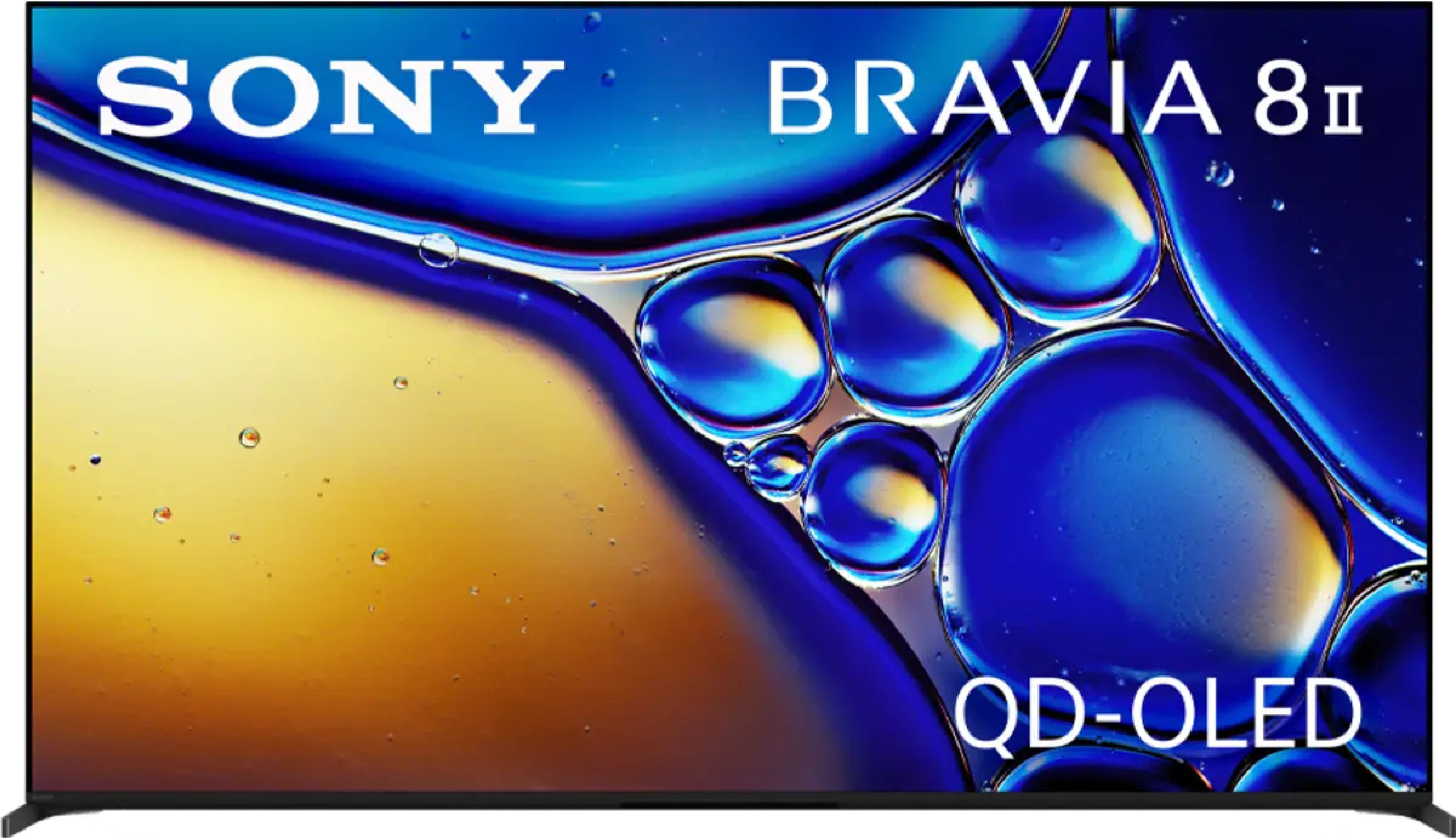
Panel type: LCD VA (wide viewing angle)
Resolution: 3840x2160
System: Google TV
Model year: 2024
Complete the survey to find out the result

Panel type: QD-OLED
Resolution: 3840x2160
System: Google TV
Model year: 2025
Complete the survey to find out the result

Overall rating
8.8
8.5
Movies and series in UHD quality
8.4
9.1
Classic TV, YouTube
8.4
9.4
Sports broadcasts (TV and apps)
8.5
9.0
Gaming on console
9.2
9.3
TV as a computer monitor
7.6
7.6
Watching in bright light
9.5
5.6
Utility functions
8.8
8.9
Apps
9.6
9.6
Sound quality
9.4
8.5
Complete the survey to find out what fits your preferences
Advantages
Amazing brightness results of HDR materials
Very good color reproduction after calibration
Advanced motion smoothing system
Noticeable positive effect of the image processor
Faithfulness to the source material
Versatile GoogleTV operating system
Good (for a VA panel) viewing angles
Amazing Contrast and Black
High brightness in HDR content
Great motion fluidity: QD-OLED 120Hz panel
Many features for gamers: VRR, ALLM, HGIG, GameBar
Top-quality digital image processing (XR Processor)
A multitude of apps on GoogleTV
Two remotes included
Phenomenal sound with DTS and Dolby Atmos support
Disadvantages
Only 2 HDMI 2.1 ports - including one ARC
Missing picture-in-picture (PiP) feature
Price
Only Two HDMI 2.1 Ports: One of the HDMI 2.1 ports is used for eARC (Soundbar)
Cherry black effect in bright light: The QD-OLED panel causes blacks in bright light to lose their depth
Average brightness in SDR mode (competition at this price can do a lot more)
Missing additional smoothness modes for PC gamers
Our verdict
Sony Bravia 8 II is undoubtedly a worthy successor to the A95L – refined, incredibly versatile, and with several noticeable improvements over its predecessor. The quality of image, sound, and overall user experience position this model among the top premium TVs of 2025. It’s a device that can enchant both movie enthusiasts and demanding gamers. Among its greatest assets is the almost perfect image, where the XR processor subtly yet effectively enhances detail and smoothness, without overdoing interference with the source material. Additionally, there’s the phenomenal Acoustic Surface sound, creating the impression that dialogues and effects come directly from the screen. Google TV operates very smoothly, offering a vast selection of apps, while extra features – like the ability to game in the cloud on PlayStation or access Bravia Core – increase the device's value. It also boasts low input lag, variable refresh rate, and full support for modern HDR formats.
Despite this, in this barrel of honey, there are a few drops of tar. The lack of refresh rates above 120 Hz, only two HDMI 2.1 ports, and average daytime performance are drawbacks that shouldn't be present in a TV of this class in 2025. Although for many these might not be deal-breaking flaws, in the super premium segment, competition is becoming increasingly strong and uncompromising. Will these shortcomings make it harder for Bravia 8 II to compete for customers' wallets? That we leave to your judgment, the market... and sales results. Regardless, Bravia 8 II is a phenomenal product that would definitely be hard to not recommend.
TV appearance




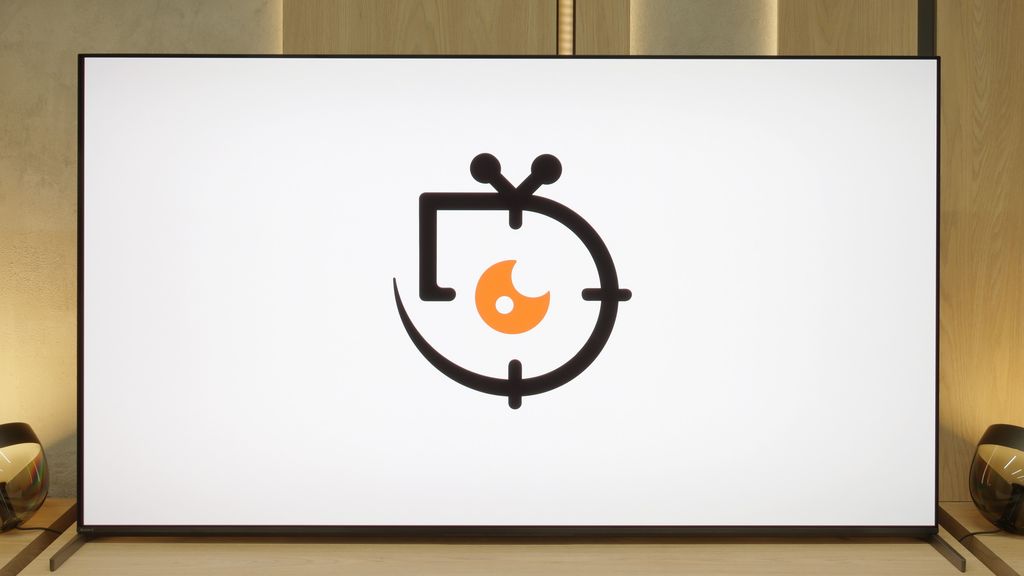
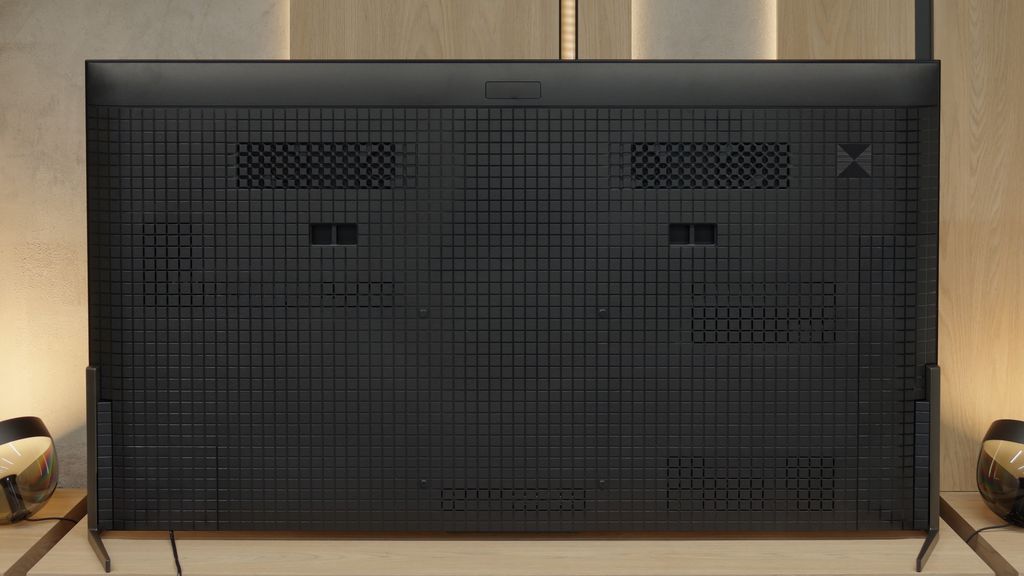
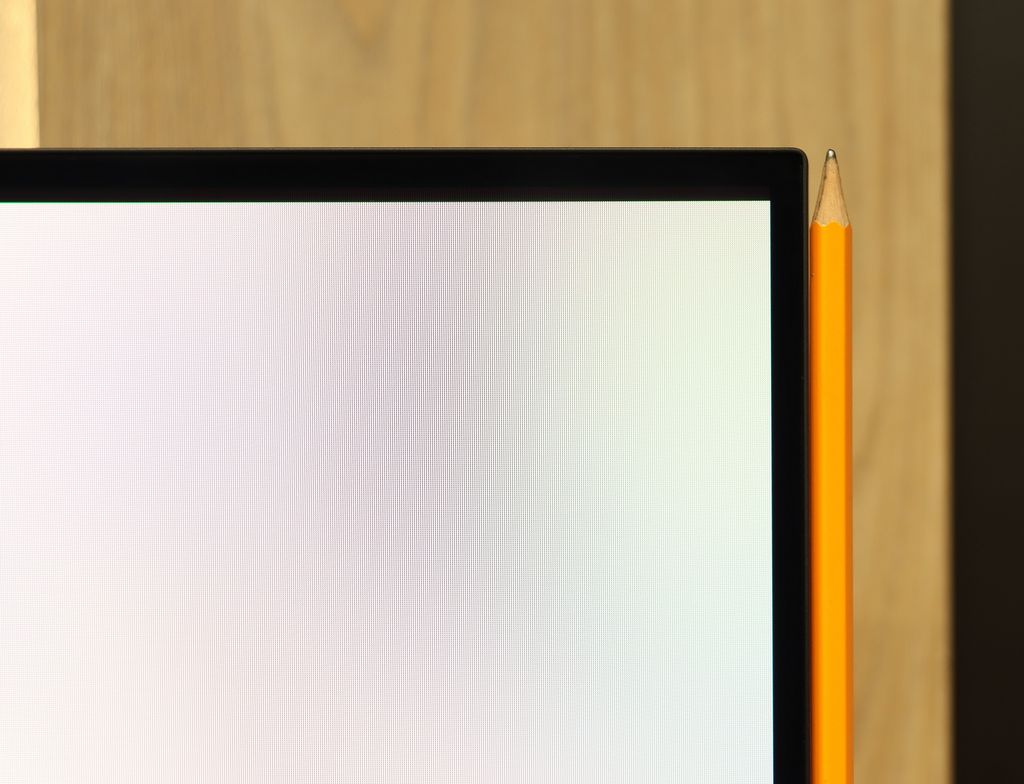
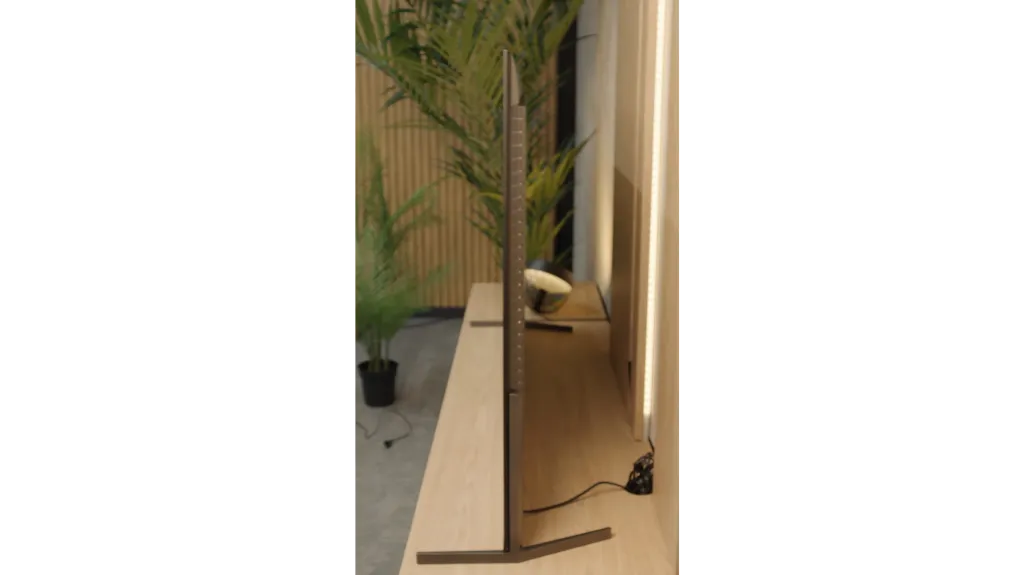
Contrast and black detail
8.6/10
10/10
Local dimming function: Yes, number of zones: 1920 (60 x 32)
Contrast:

Result
184,000:1

Result
98,500:1

Result
120,000:1

Result
9,050:1

Result
5,800:1

Result
∞:1

Result
∞:1

Result
∞:1

Result
∞:1

Result
∞:1
Halo effect and black detail visibility:

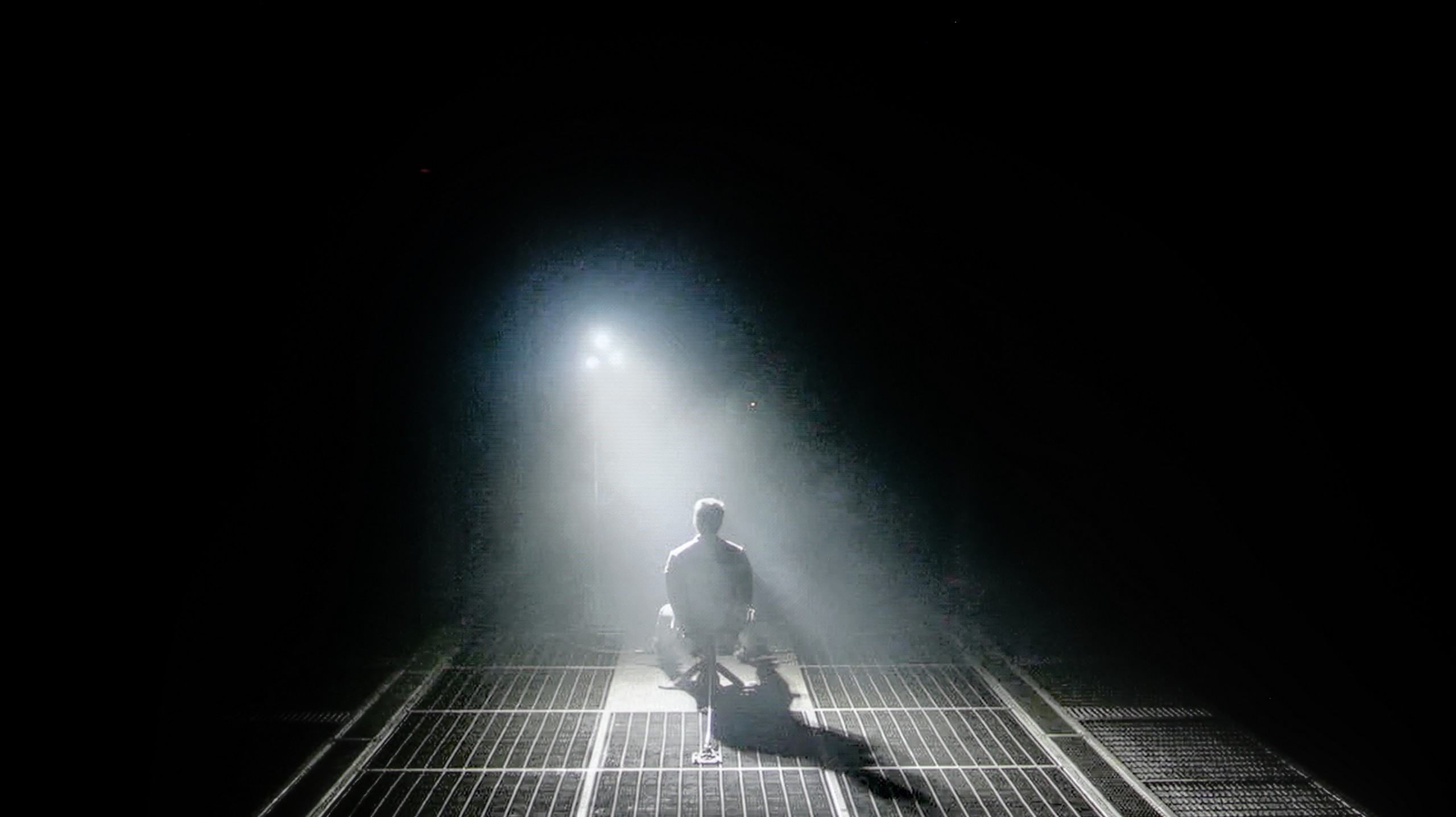
The Sony Bravia 9 features a high-contrast VA panel supported by a backlight made of Mini LED diodes, with the 75" model boasting a remarkable 1920 zones. This combination, paired with advanced — and arguably the best — zone dimming algorithms, results in exceptional contrast and deep black levels. While it doesn’t quite match the black levels of OLED TVs, the performance is still impressive, especially compared to other televisions, which struggle to reproduce a director’s intended vision.
Looking at two test scenes from Oblivion and The Revenant, we can see the backlight algorithms at work, exhibiting mature handling of contrast that preserves black levels without compromising the original image. The blooming/halo effect observed in the second film is noticeably less pronounced in person, with the camera lens amplifying the effect. Additionally, challenging details in the second and third planes of the scene are clearly visible and not lost in the black, showcasing the Bravia 9’s ability to reproduce fine details.
In terms of black levels and contrast, the Sony Bravia 8 II is absolutely top-notch – and this is meant in every sense of the word. We are dealing here with a QD-OLED panel, which naturally offers contrast close to infinity. This means that each pixel can completely turn off, making the black parts of the image truly black, rather than dark gray or navy blue. The effect is particularly impressive in movie conditions when the lights in the room are dimmed – then the image gains real depth and a cinematic quality. The Bravia 8 II also impresses with its light separation in difficult scenes. Test footage from films like Oblivion shows how precisely the television can separate small light sources from the surrounding darkness – without the halo or blurring effect that still occurs in the best LCD televisions (even Bravia 9). Let's add that bright elements maintain full intensity even against absolute black. This not only creates a huge visual impact but also translates into better detail reproduction in high-contrast scenes, which is especially important in HDR content.
HDR effect quality
8.6/10
8.4/10
Luminance measurements in HDR:

Result
2199 nit

Result
1700 nit

Result
1717 nit

Result
1751 nit

Result
1741 nit

Result
1922 nit

Result
2034 nit

Result
1999 nit

Result
2026 nit

Result
770 nit
Scene from the movie “Pan” (about 2800 nits)

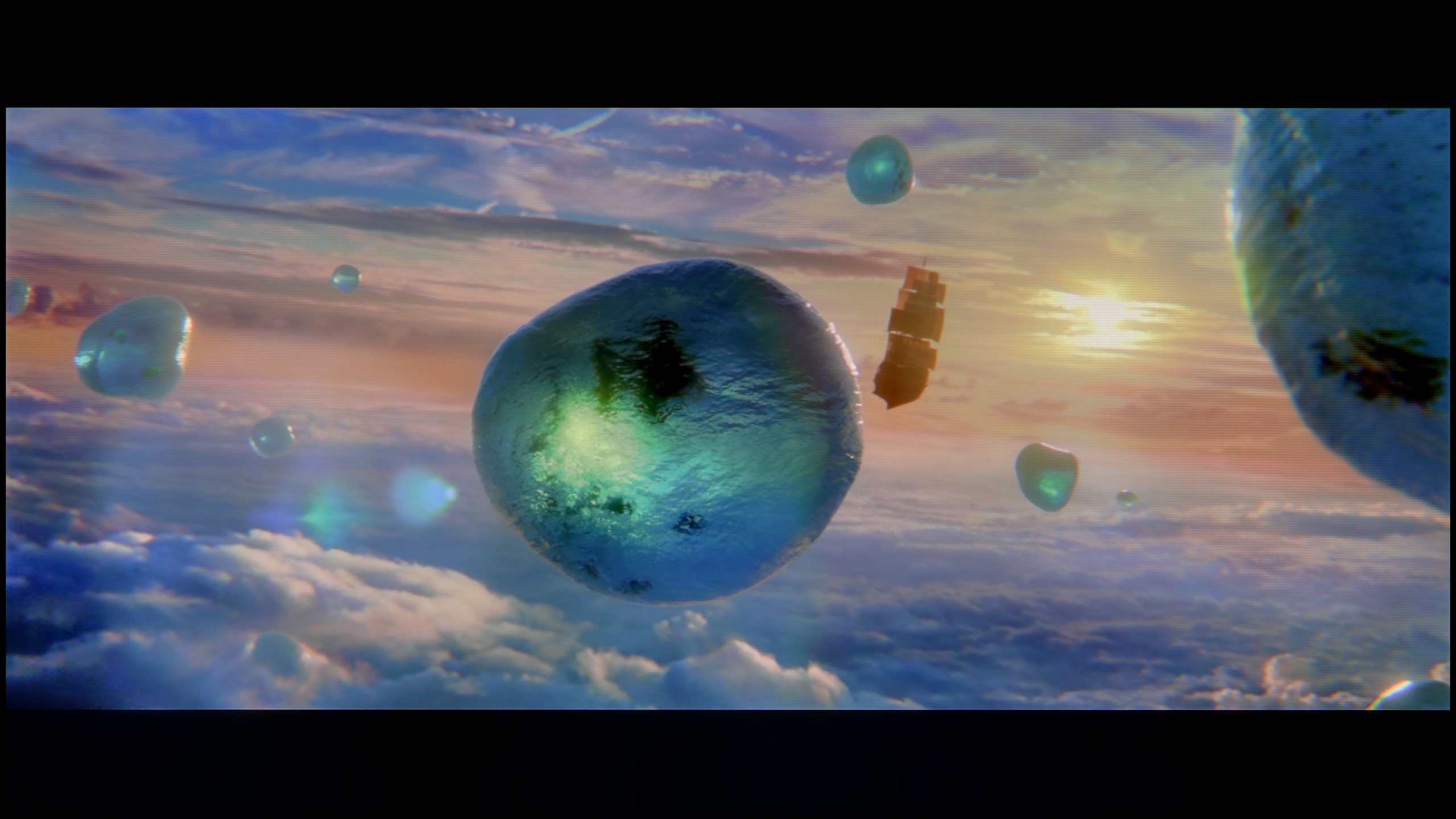
Scene from the movie “Billy Lynn” (about 1100 nits)

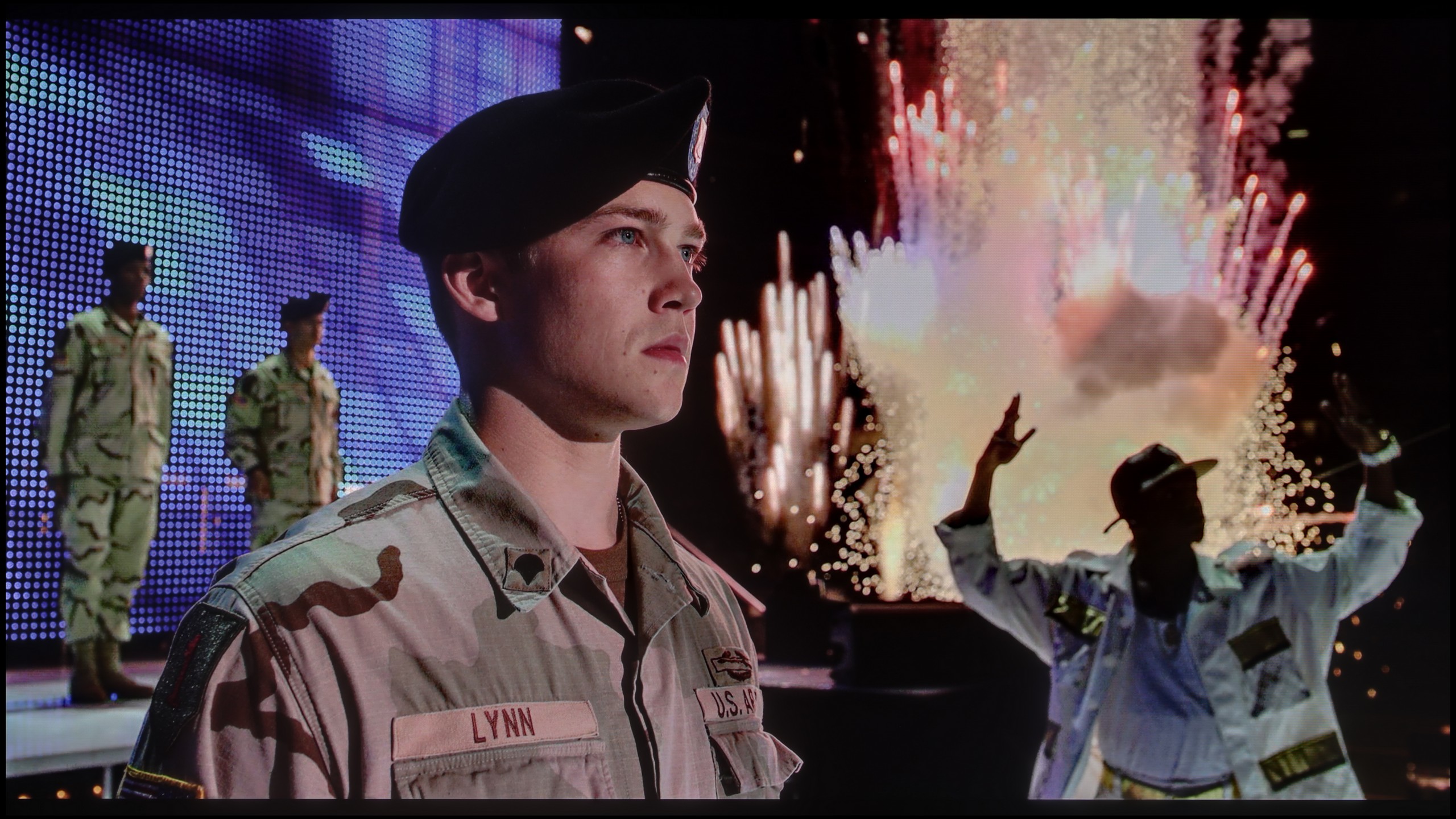
Static HDR10


Dynamic: Dolby Vision
Dynamic: Dolby Vision


HDR luminance chart:
Sony Bravia 8 MK2
HDR luminance
Sony Bravia 9 (XR90)
HDR luminance
The brightness performance of the Sony Bravia 9 is exceptional. Each scene reaches over 1500 nits, and the television can shine even brighter during movie playback. This level of brightness provides an extraordinary viewing experience, allowing for immersive interaction with high-quality video content. Thanks to its extensive coverage of the DCI-P3 colour gamut, the image is vibrant, and when combined with such high luminance, it almost feels alive. With its impressive peak brightness, viewers can fully appreciate the colour range, even in the most challenging scenes involving dynamic lighting changes. The Bravia 9 also supports Dolby Vision and HDR10 formats, further elevating the viewing experience.
Thanks to the new QD-OLED panel, the Sony Bravia 8 II can achieve astronomically high brightness levels of around 2000 nits, translating to nearly reference quality in films and series recorded in HDR format. In test materials such as Life of Pi and Sicario 2, the effect is simply stunning – details in bright parts of the image remain perfectly visible, while night scenes captivate with depth and contrast. However, it's not perfect. Compared to the fiercest competitors, the Bravia 8 II shows a noticeable drop in brightness during full-screen, very bright scenes. When comparing peak luminance to 100% white brightness in HDR mode, the Bravia 8 II is even two or three times dimmer than the LG G5 or Samsung S95F models. This was particularly evident in a scene from the movie The Meg – the screen became noticeably darker than in competing televisions. Despite this drawback, the results of the Bravia 8 II still place it among the very top of the market. It deserves praise for its absolutely top-notch color gamut coverage – DCI-P3 at nearly 100%, and BT.2020 close to 90%. These parameters allow for fully extracting the potential of HDR content and providing a cinematic experience in the comfort of your home.
Factory color reproduction
8.1/10
8/10


Factory Mode
After calibration
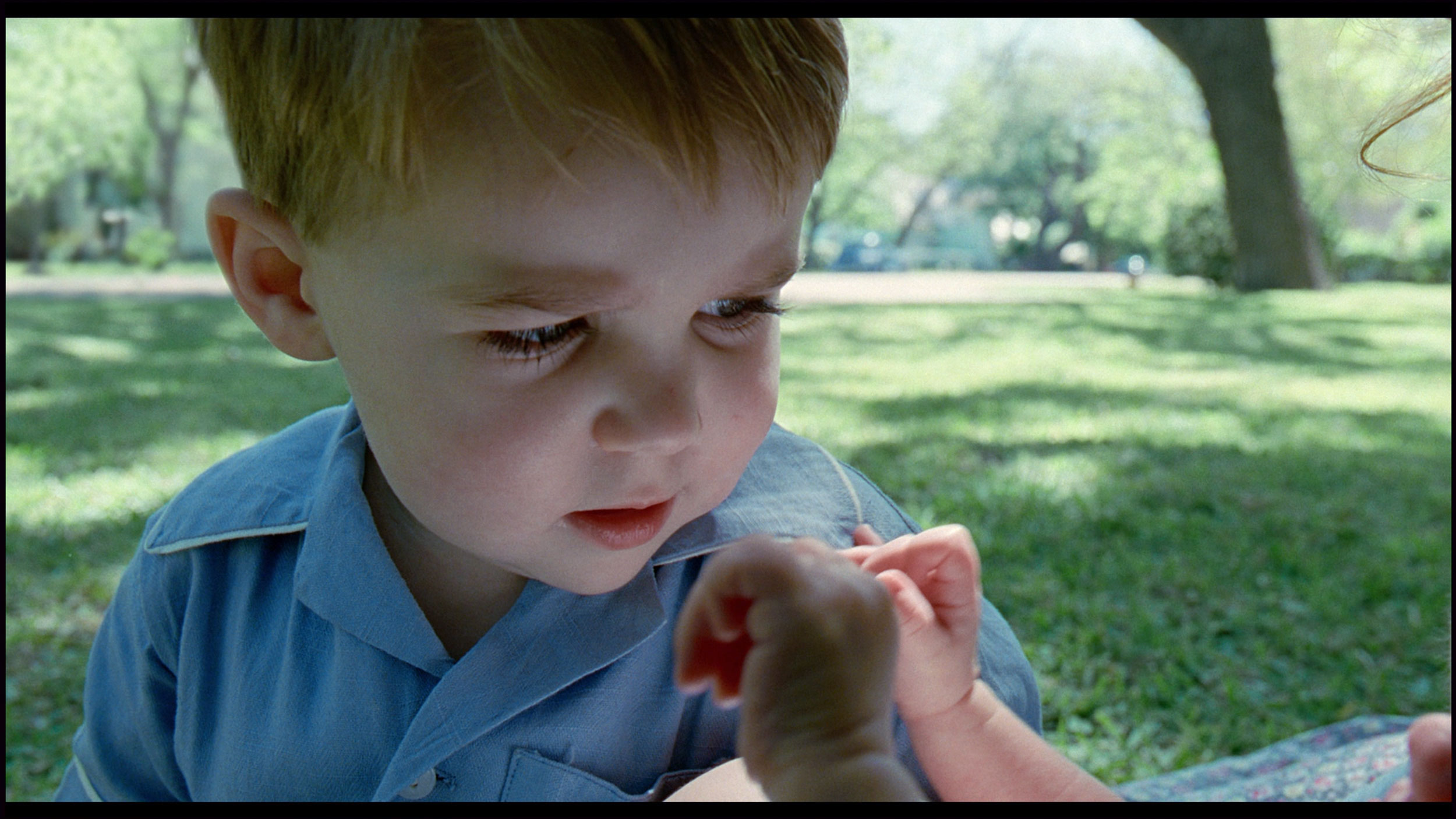
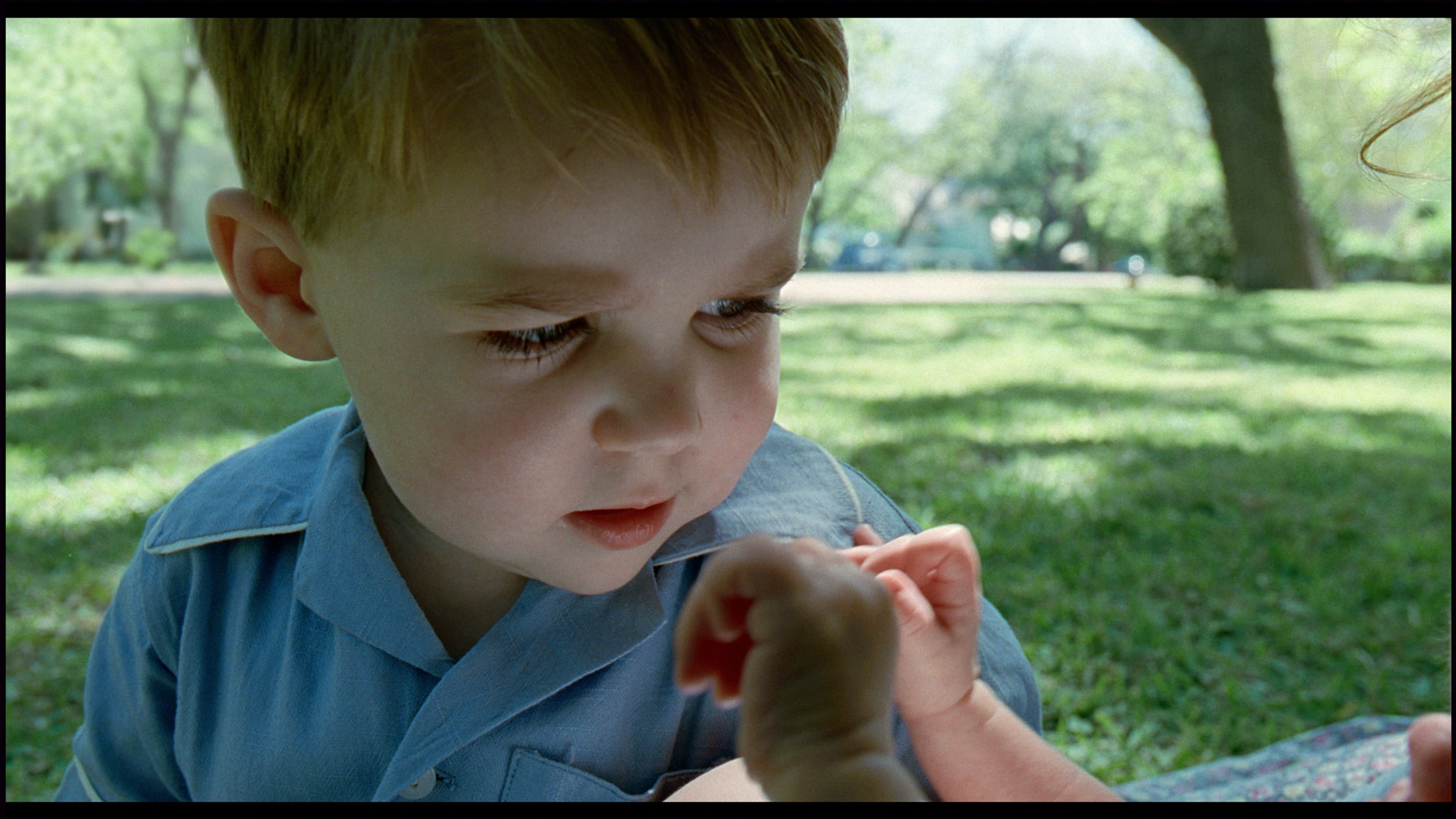
Factory Mode
After calibration
The "IMAX Enhanced" factory mode has remained the best option in Sony televisions for years, and it was used throughout the entire testing process. While it aligns closely with the reference compared to other predefined settings, improvements could be made for a better viewing experience.
In SDR materials, the gamma shows a noticeable boost, which leads to over-contrasting the image. Additionally, the beginning of the graph deviates significantly from the reference, resulting in merged details in the darker areas, creating an unpleasant uniform blotch. The EOTF curve in HDR content, on the other hand, appears mostly correct, with only minor deviations from the reference.
However, the most prominent issues affect the white balance. There is a persistent green colour dominance, leading to problems with grey tones and overall colour misalignment. This imbalance in the white balance gives the image an unwanted greenish tinge, negatively impacting the overall visual quality.
Right out of the box, the Bravia 8 II performs really well. In the best IMAX® Enhanced mode, the television can reproduce colors in a pleasing and natural way, although “good” here does not mean “best in class.” The white balance definitely needs adjustment – skin tones tend to lean into slightly pink/cool hues, both in SDR and HDR materials. We also noticed that the EOTF curve characteristics show a tendency to brighten the darkest parts of the image. This is probably due to the manufacturer's desire to highlight as many details as possible, even in deep shadows. Is this a good approach? It's hard to say definitively, but we know one thing – it's not an ideal solution.
Color reproduction after calibration
9.3/10
9.2/10

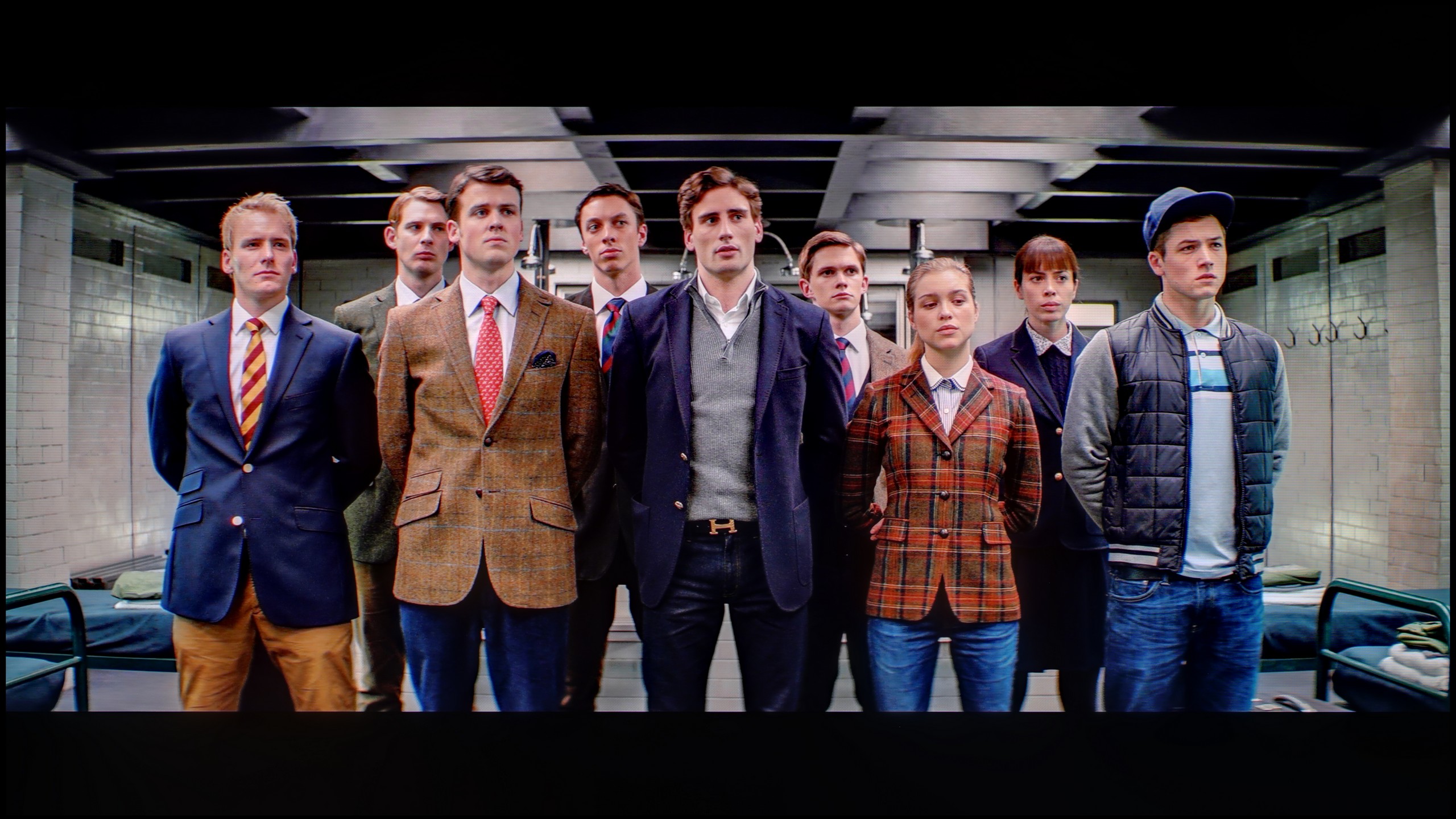

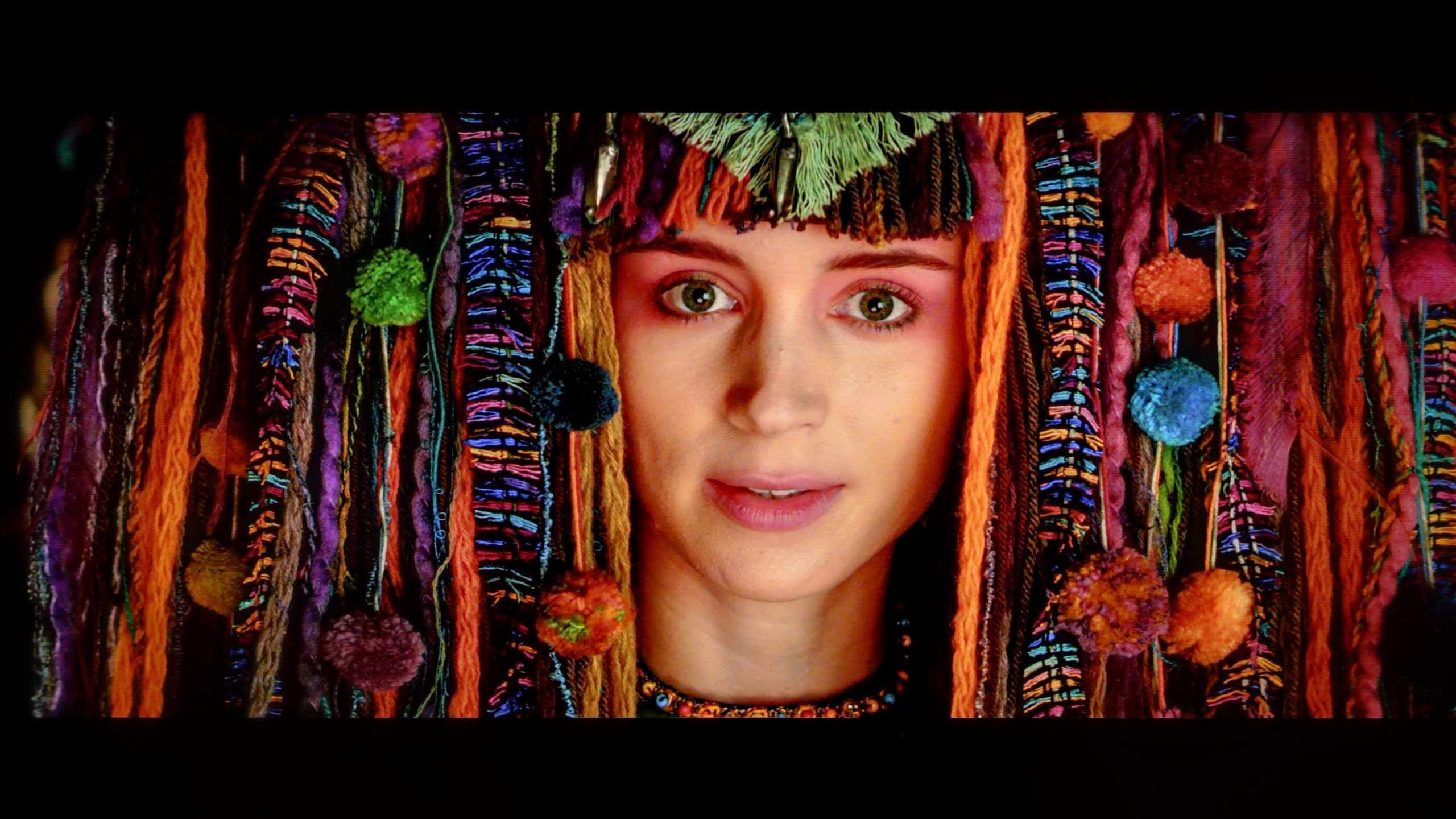
The colour reproduction after the calibration process on the Sony Bravia 9 is nothing short of excellent. Regardless of the signal, whether SDR or HDR, the image comes remarkably close to the director's intended vision. Nearly every flaw in the image has been meticulously modelled and corrected to a high degree.
This impressive result can be attributed to the advanced tools available for calibration, which Sony has been offering in its televisions for years. Notable tools include the 2- and 20-point grayscale calibration and a very comprehensive CMS (Colour Management System). These features allow for precise adjustments, ensuring that the colours and overall image quality are as accurate and faithful to the source material as possible.
After calibration, the excessive cooling of the image caused by the strong boost of blue color was eliminated. Reds became deeper, and skin tones took on a natural, healthy appearance. Actors who previously seemed "cold" now appear much livelier and more convincing on screen. However, one thing has not changed – the analysis of the EOTF curve still shows that the Bravia 8 II tends to lighten the darkest parts of the image. It's hard to say whether this is a deliberate choice by the manufacturer or a result of the panel design and software. In practice, this means that scenes the creators wanted to leave in deep darkness can reveal more details than intended. Nevertheless, the viewing experience after calibration is clearly better – warm, natural colors and realistic skin tones make watching on the Bravia 8 II simply more pleasant to the eye.
Smoothness of tonal transitions
7.1/10
8.5/10

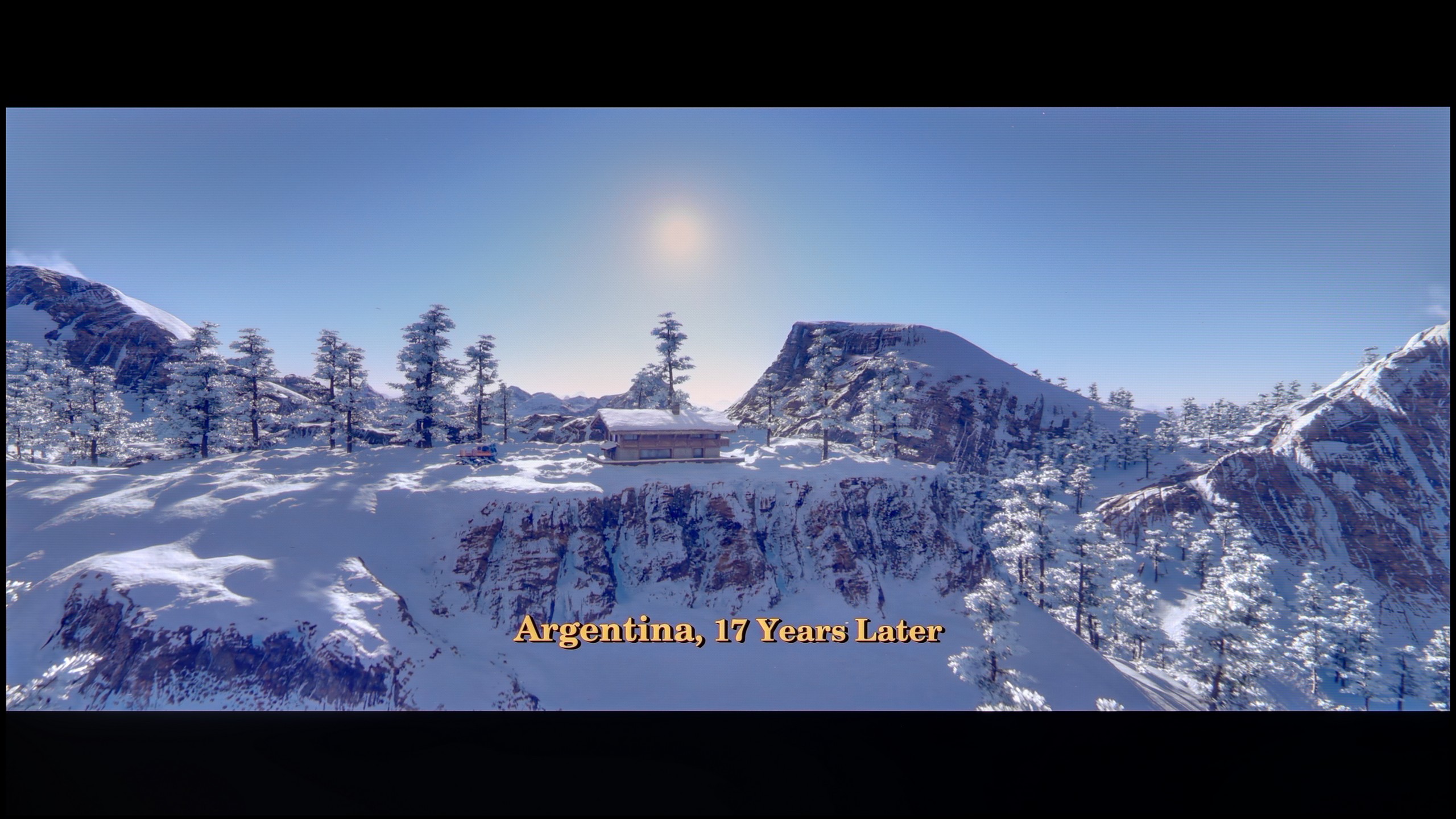

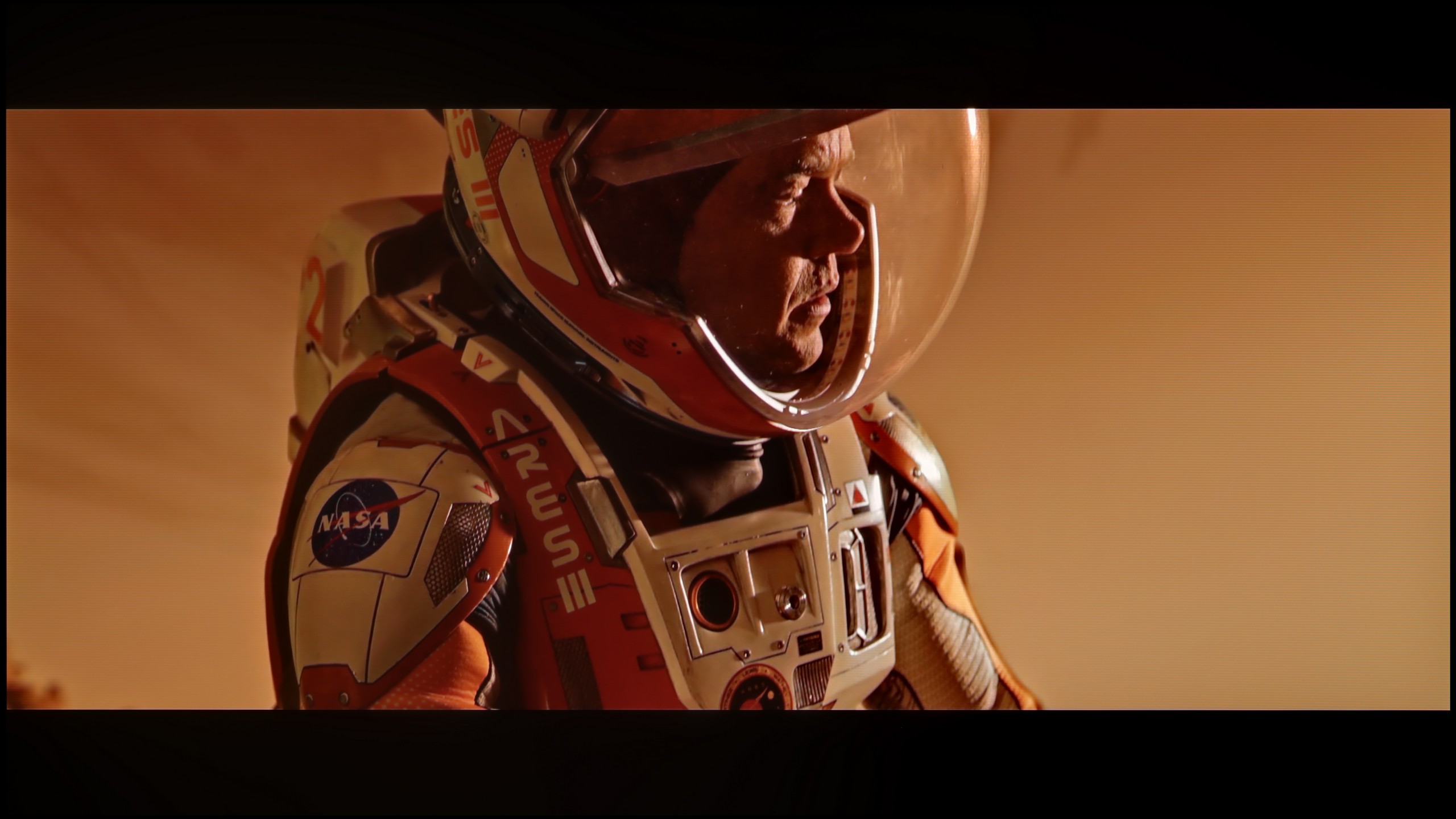

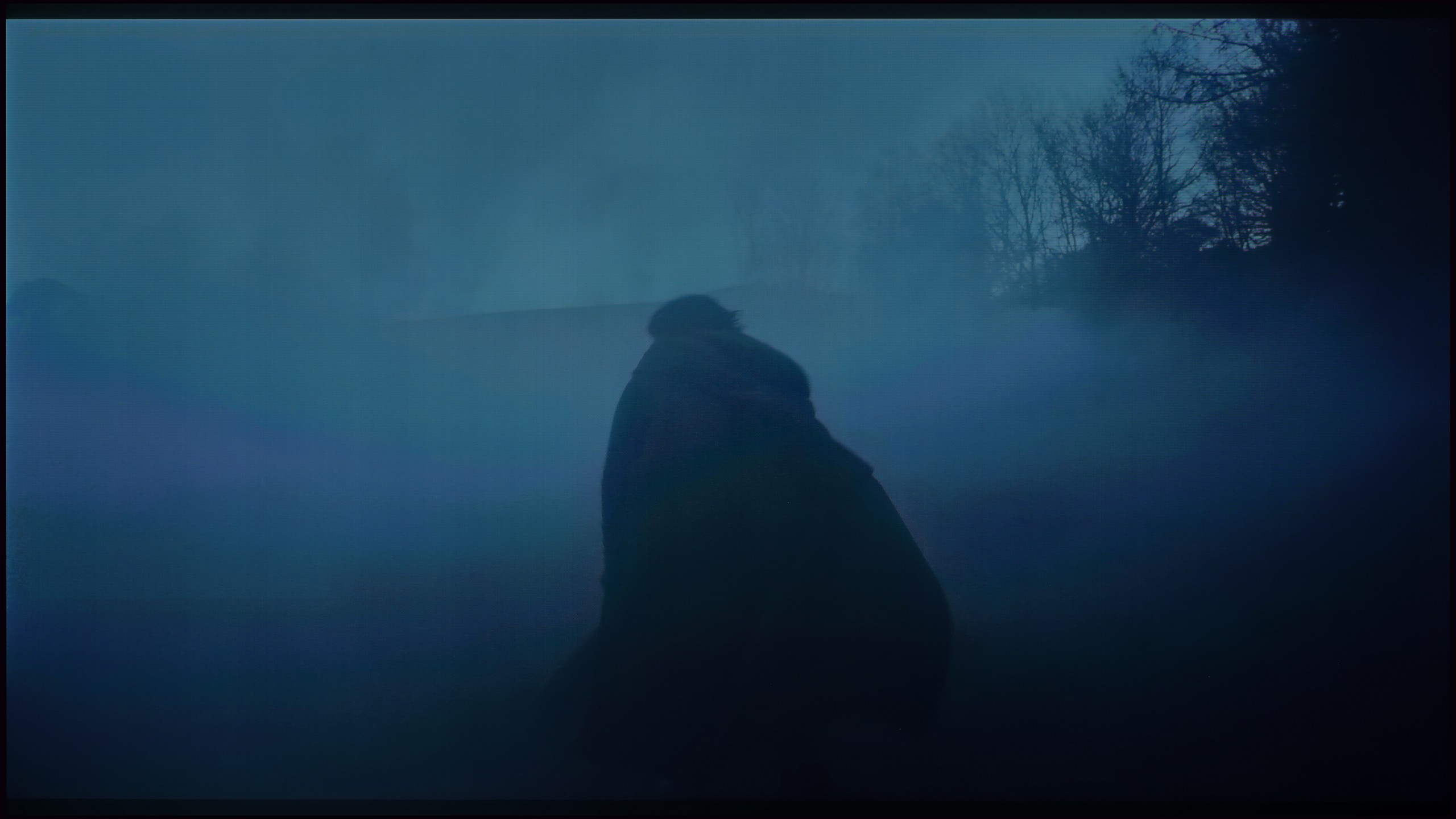

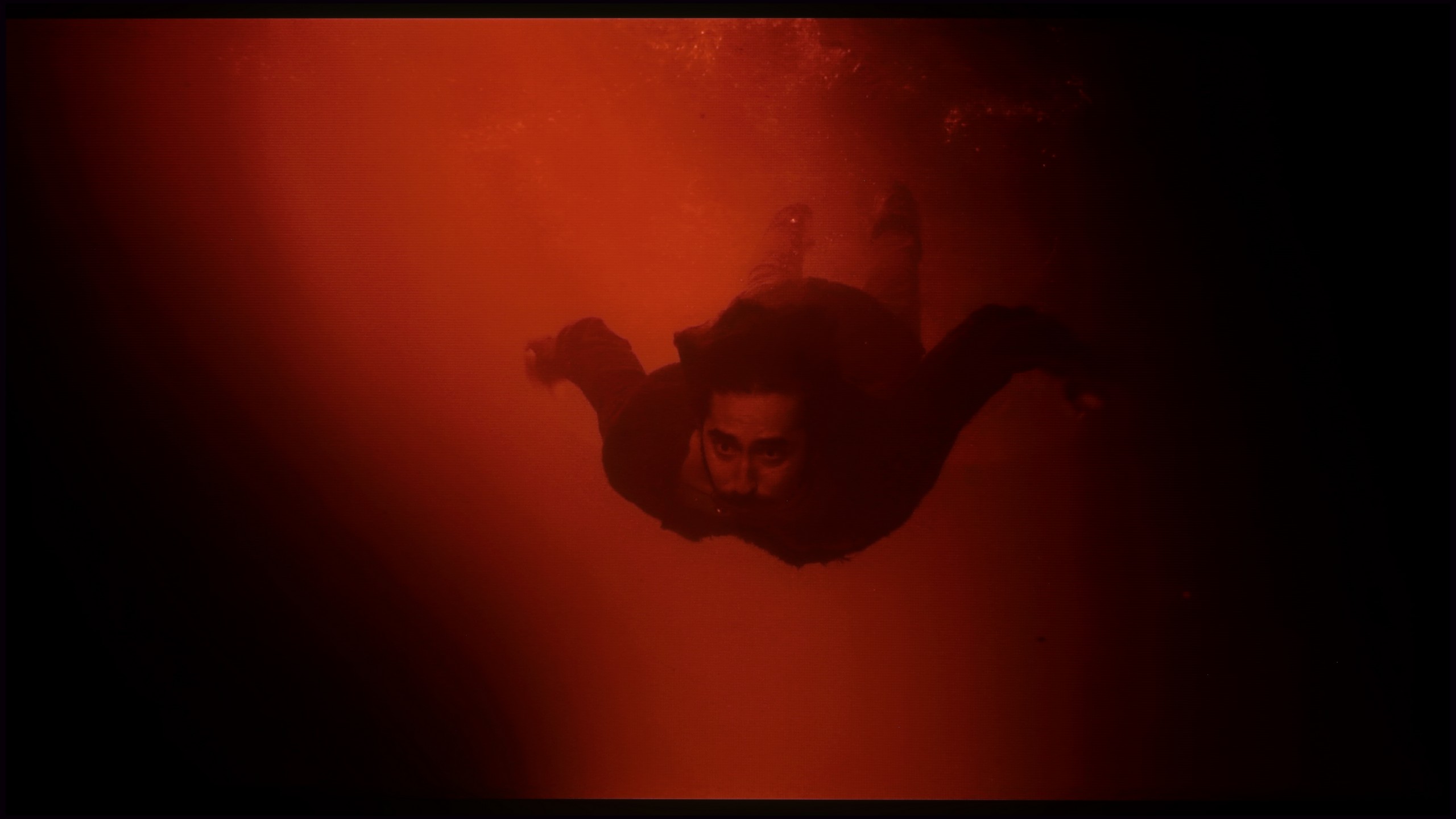




The default quality of gentle gradation on the Sony Bravia 9 without enhancement, is relatively average for its price range and class. While the issue isn't evident with bright backgrounds, it becomes quite noticeable in darker scenes. This is demonstrated in the last two test scenes, where tonal transitions are visible, which may be off-putting to those particularly sensitive to image purity.
The fluidity of tonal transitions in the Sony Bravia 8 II can be described as very good, although with a clear distinction between light and dark materials. In high luminance scenes, the television performs almost exemplary – the gradation is smooth, free from visible bands or artifacts, and subtle color transitions maintain full consistency. This is particularly evident in HDR materials, where a bright sky or illuminated frames look almost perfect – here the assessment could easily be 9.5/10.
The situation is somewhat different in darker sequences. In night scenes or heavily shadowed parts, especially in test materials, one can notice slight issues with the fluidity of the gradation – transitions become less subtle. Although this is not a level that ruins the viewing experience, a more sensitive eye will catch the difference, especially when compared to absolutely top models on the market. In this category, the rating hovers around 7.5/10.
Image scaling and smoothness of tonal transitions
8.5/10
8.5/10
Smooth transition function

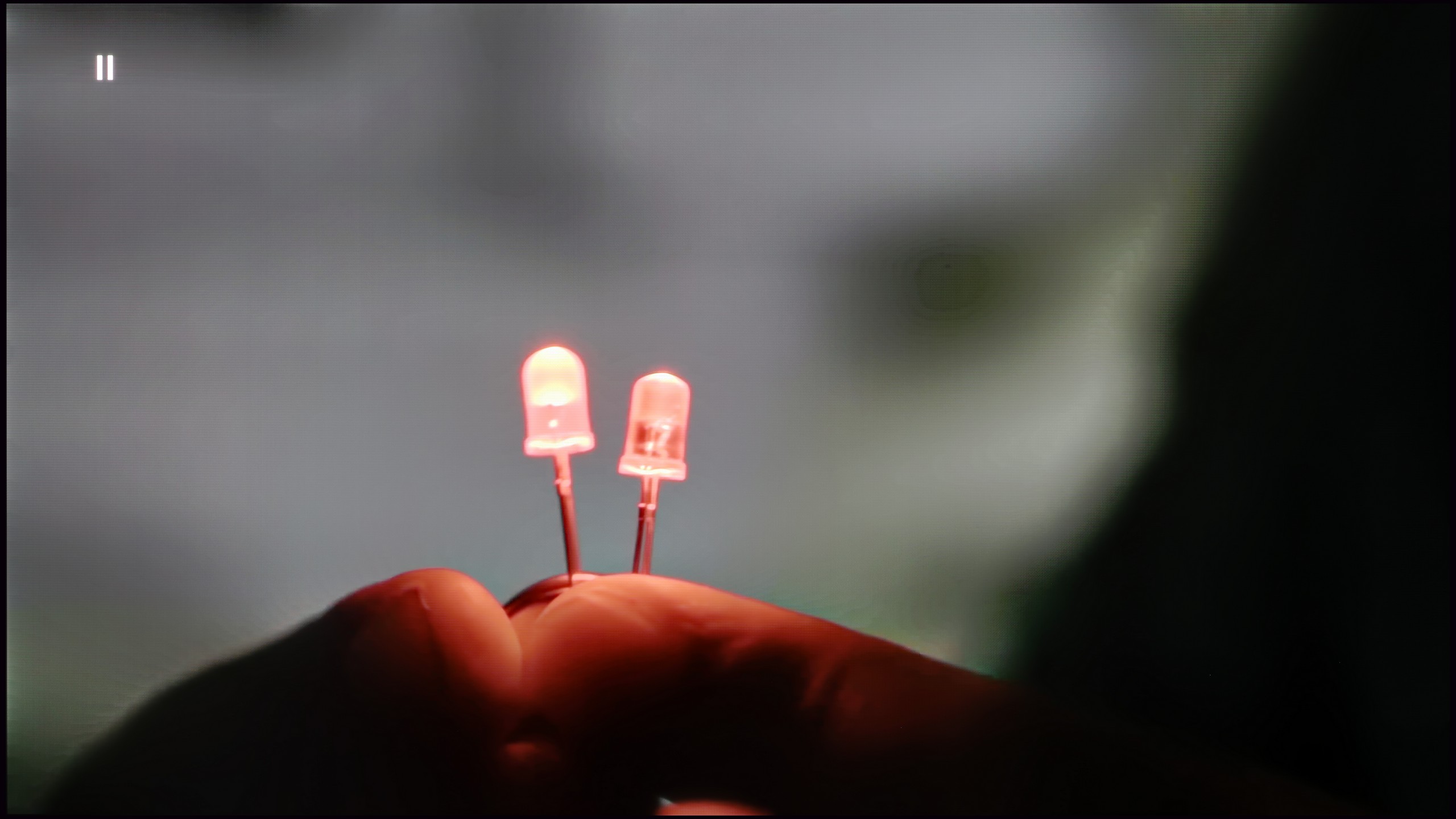
Image without overscan on the SD signal


When analysing the quality of tonal transitions and image scaling, especially for lower-quality materials, the improvement after activating the function for tonal transitions is clear. By default, the quality is quite average, but once the function is turned on, even at the lowest setting, the results are among the best we've seen. This feature can be enabled without worrying about negative side effects, such as film grain blur.
Sony's "XR" processor, which the brand has been touting for several years, lives up to its reputation for image scaling. The image quality is incredibly sharp while maintaining a very natural look. This reinforces that Sony's processing technology is one of the best available, particularly when handling lower-resolution content.
Upscaling and digital image processing are a true showcase of the capabilities of Bravia 8 II. Sony has long been regarded as a master in this field, and here it only confirms its reputation. The proprietary XR processor can extract nearly maximum quality from lower resolution materials—whether it's television or an old DVD movie, the image looks sharper, with more details and better depth. Sure, if we feed it exceptionally low-quality material (like our archival photo with the Model), it won't work miracles, but in everyday viewing, it's hard to find anything to complain about.
The soft gradation feature also performs excellently. In the "Medium" setting, it effectively smooths tonal transitions, eliminating banding on colored and gray gradients, while simultaneously preserving film grain and fine image details. It is this balance between delicacy and effectiveness that keeps Sony TVs among the best on the market in this category.
Blur and motion smoothness
8.5/10
8.5/10

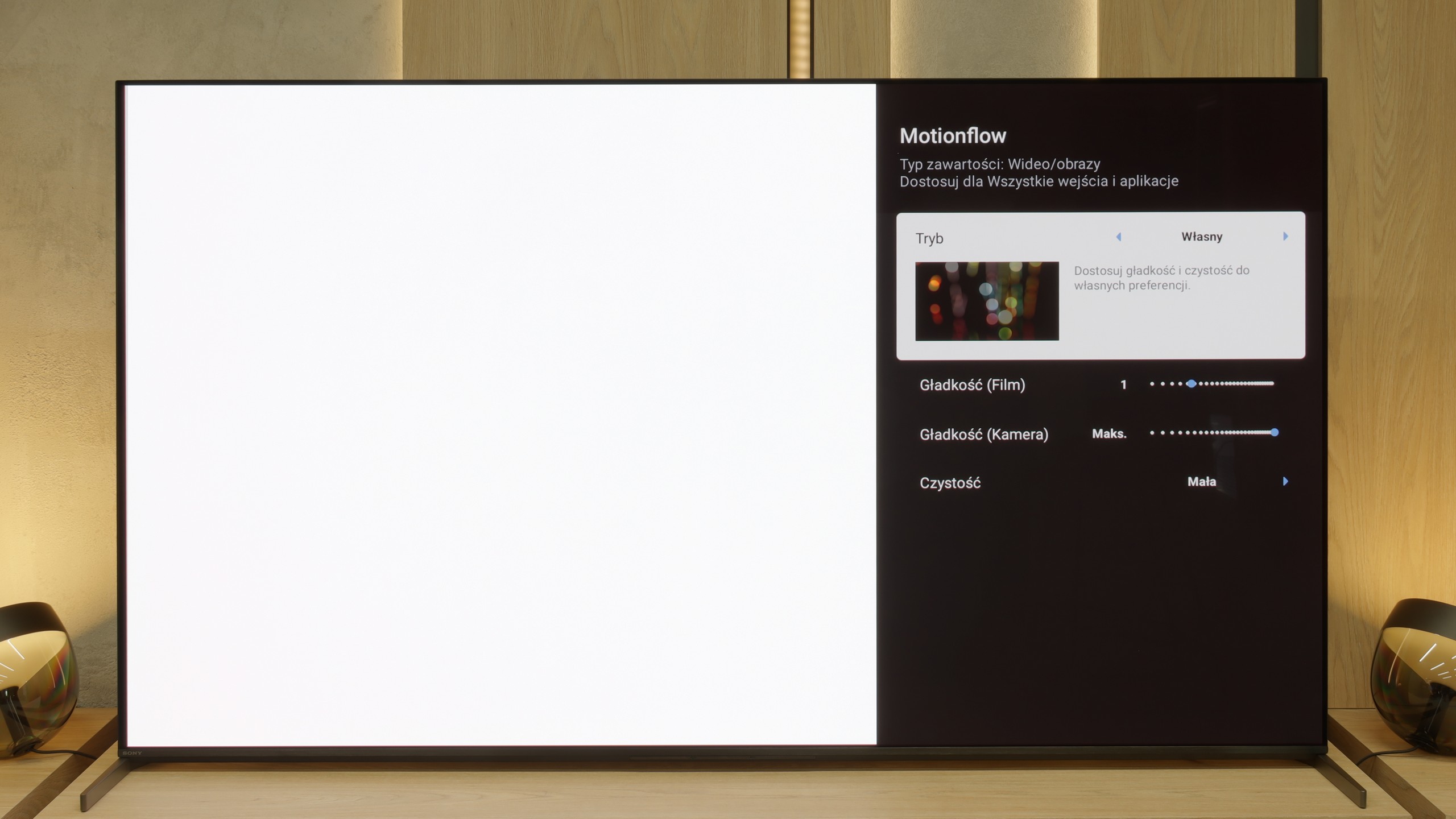
Blur (native resolution, maximum refresh rate):



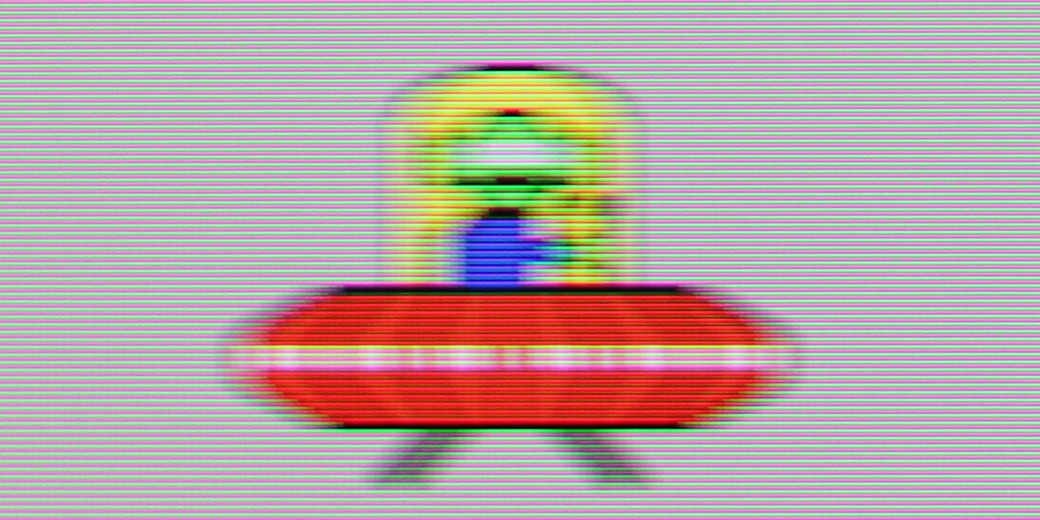
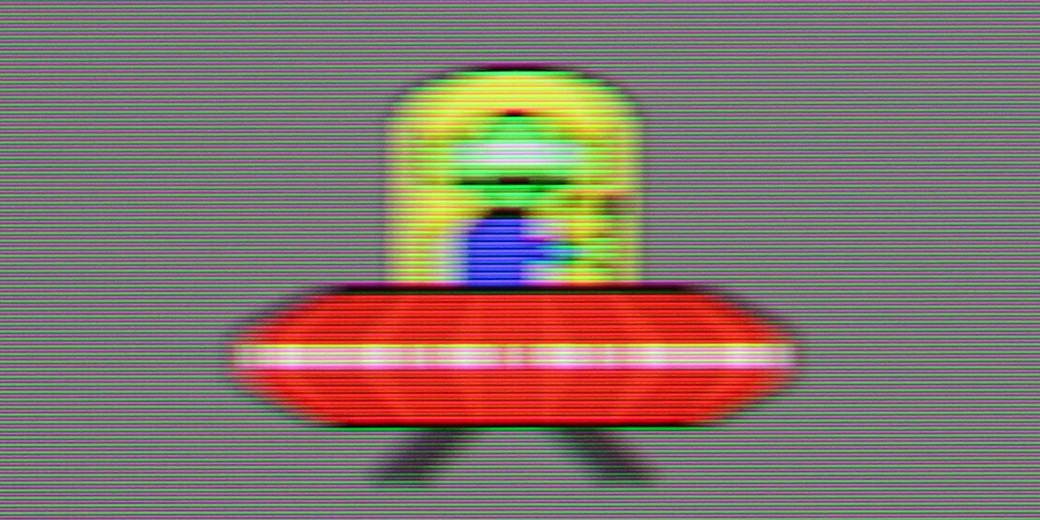
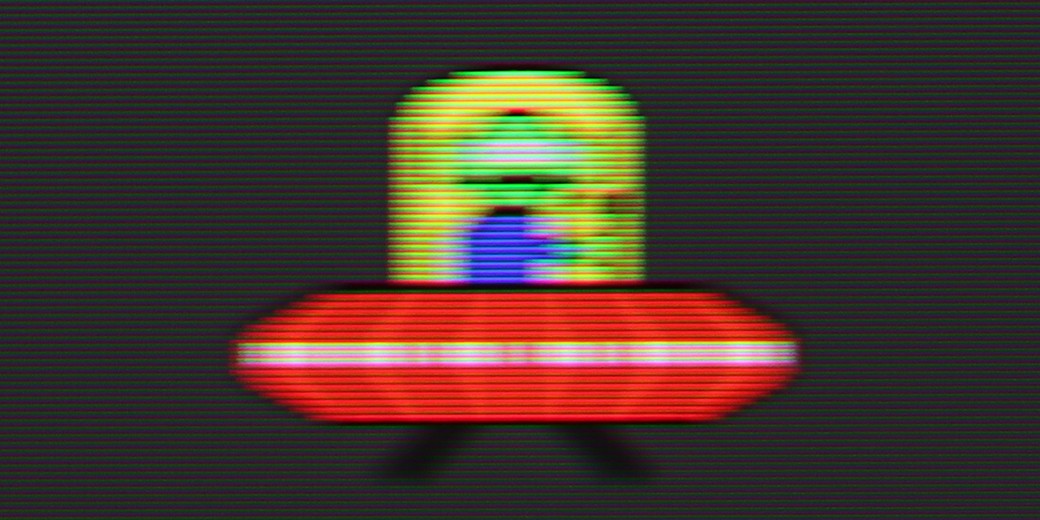
Blur (BFI function enabled):



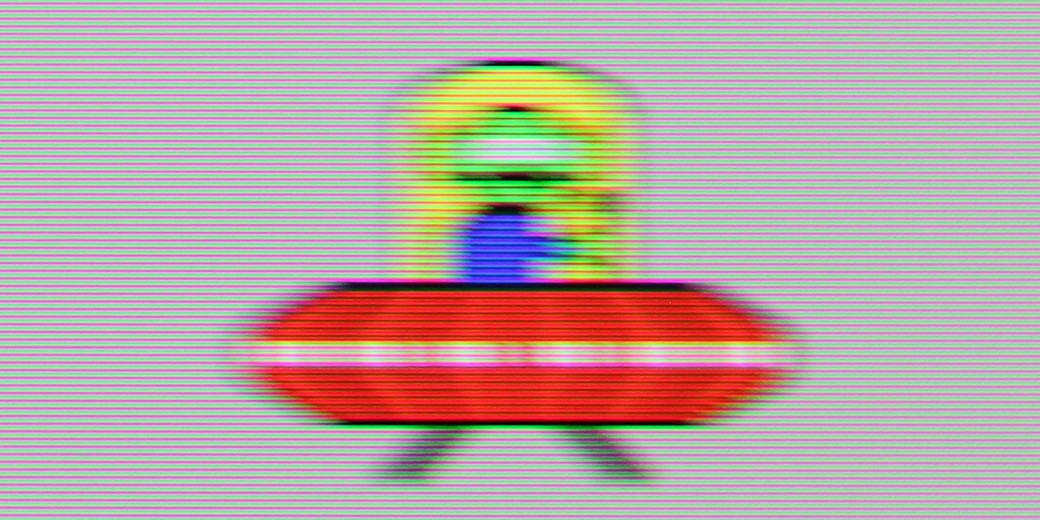
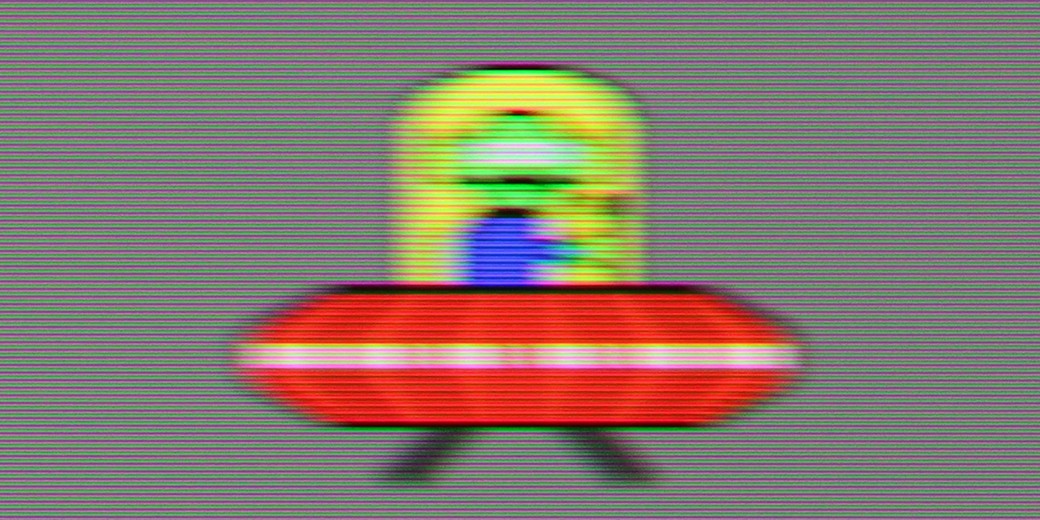
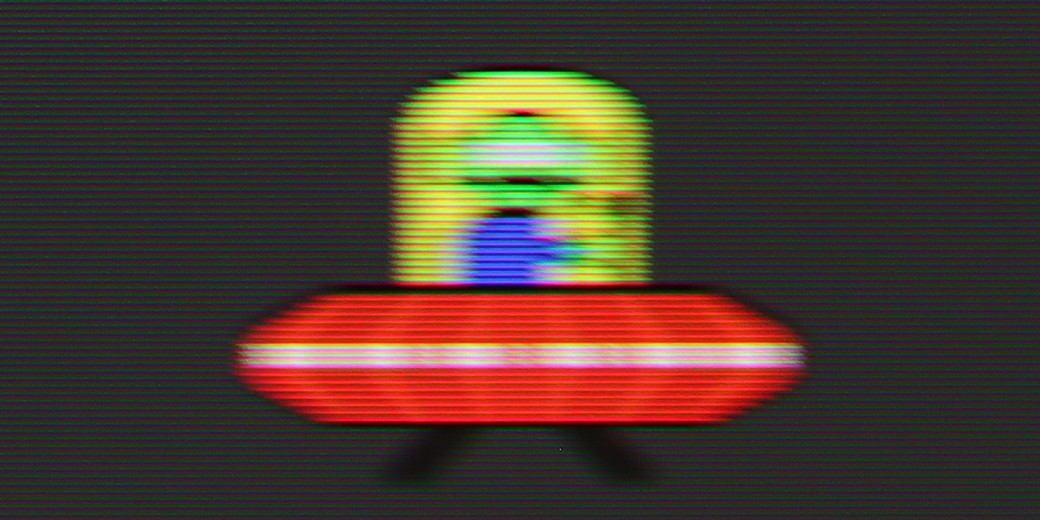
Smużenie ():
Smużenie (MotionFlow 120Hz):
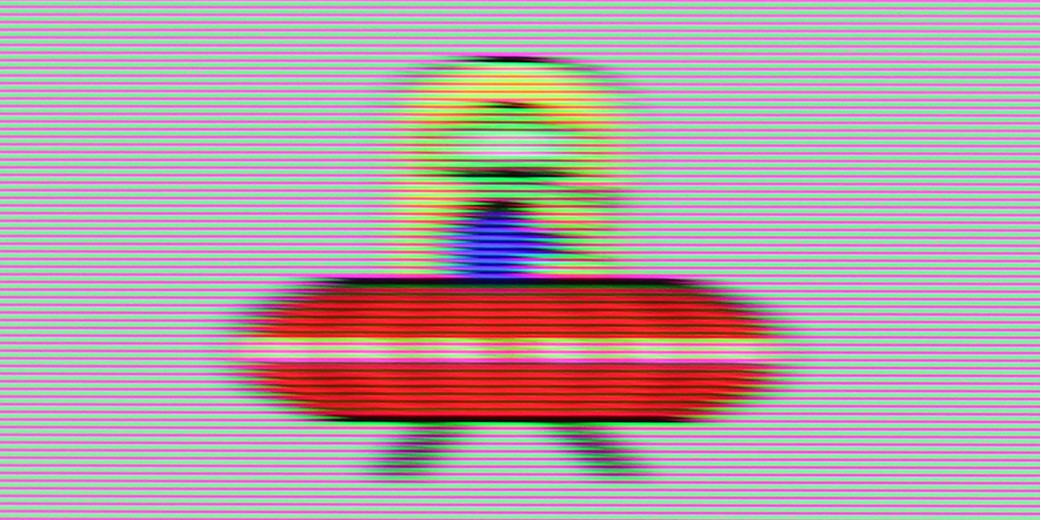
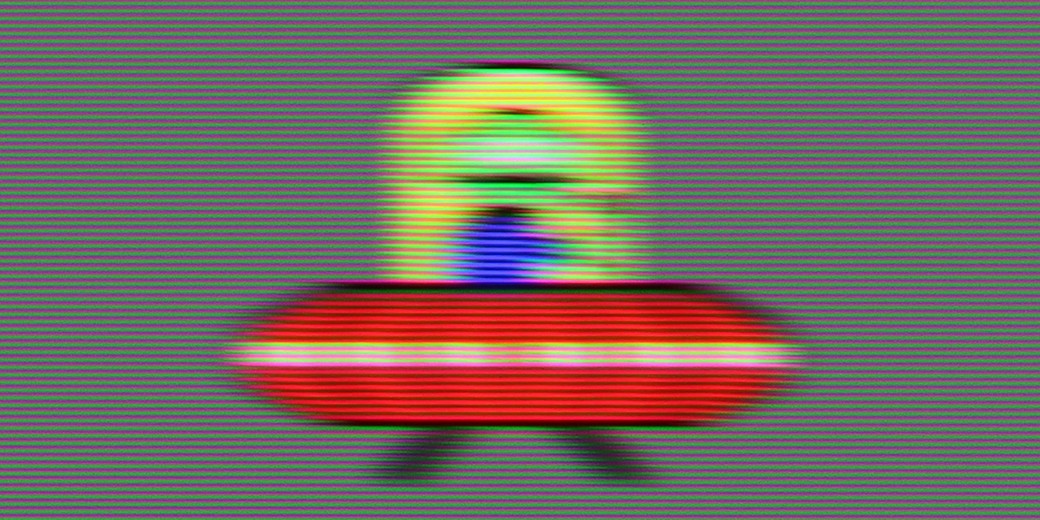
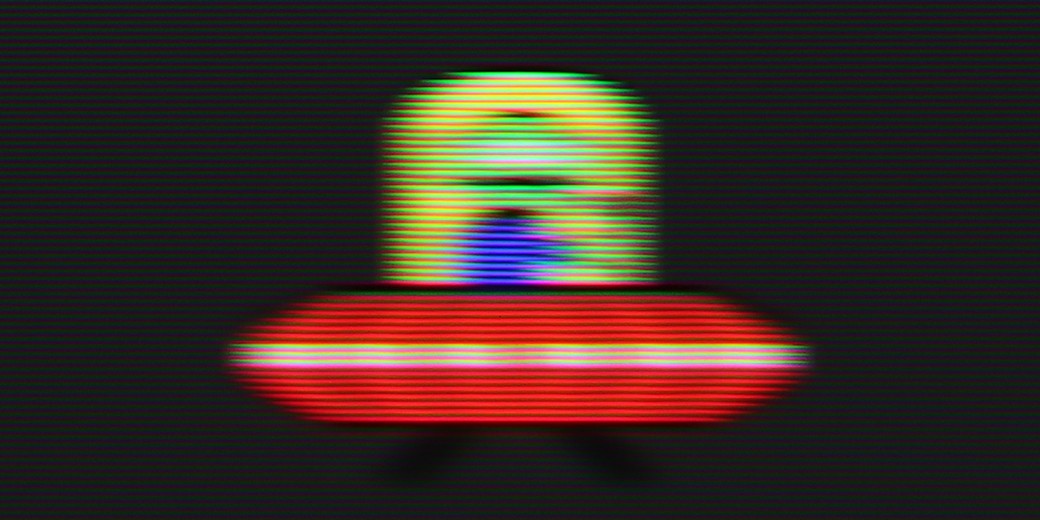
The maximum refresh rate of the Sony Bravia 9 is 120 Hz, the minimum for those primarily watching sports or other high-motion content. This refresh rate ensures the image remains sharp and smooth, even during fast-paced scenes. For more demanding users, Sony has implemented an advanced motion smoothing system, divided into three distinct segments: Smoothness (Film), Smoothness (Camera), and Clarity. These settings can be adjusted to various degrees, allowing users to fine-tune the picture to their preferences. For example, a setting with slight smoothing can be used to avoid the "soap opera effect," delivering a more natural and cinematic viewing experience. This level of customisation ensures that viewers can find their ideal balance between smoothness and clarity.
Motion smoothness is practically a closed topic in the case of Bravia 8 II. The OLED with 120 Hz refresh rate naturally provides a very clean, clear image in dynamic scenes, so there is little to complain about. However, particular praise is due to one of the best motion smoothing systems on the market. They allow for precise adjustment of film smoothness according to one's preferences – from gentle smoothing to an almost "theatrical" effect – without the risk of artificial jumps, tearing of the image, or annoying artifacts. This is one of those features that will be appreciated both during movie screenings and while watching sports.
Console compatibility and gaming features
9.4/10
9.4/10
- ALLM
- VRR
- VRR range48 - 120Hz48 - 120Hz
- Dolby Vision Game Mode
- Correct implementation of HGIG
- 1080p@120Hz
- 1440p@120Hz
- 4K@120Hz
- Game bar

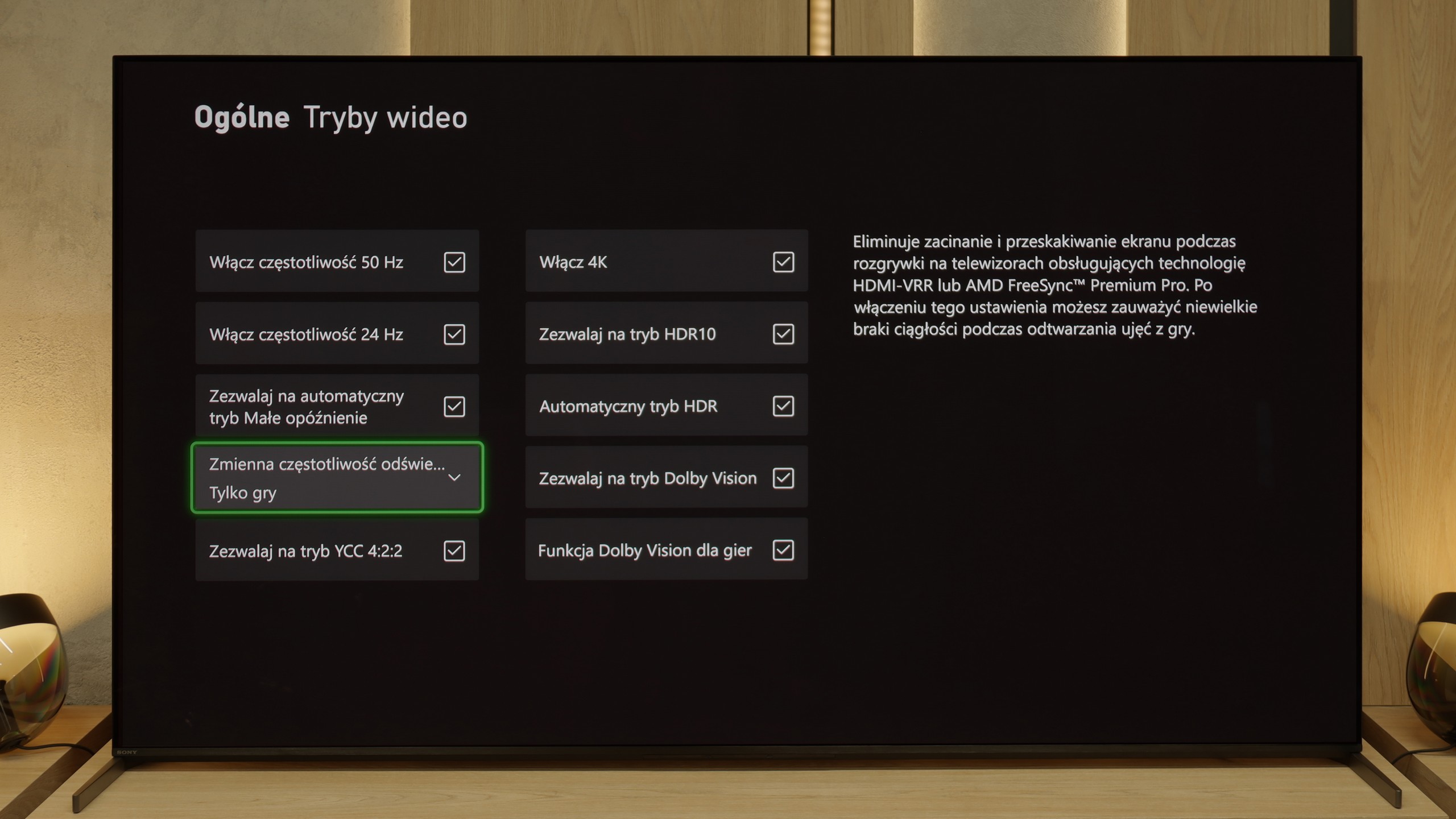

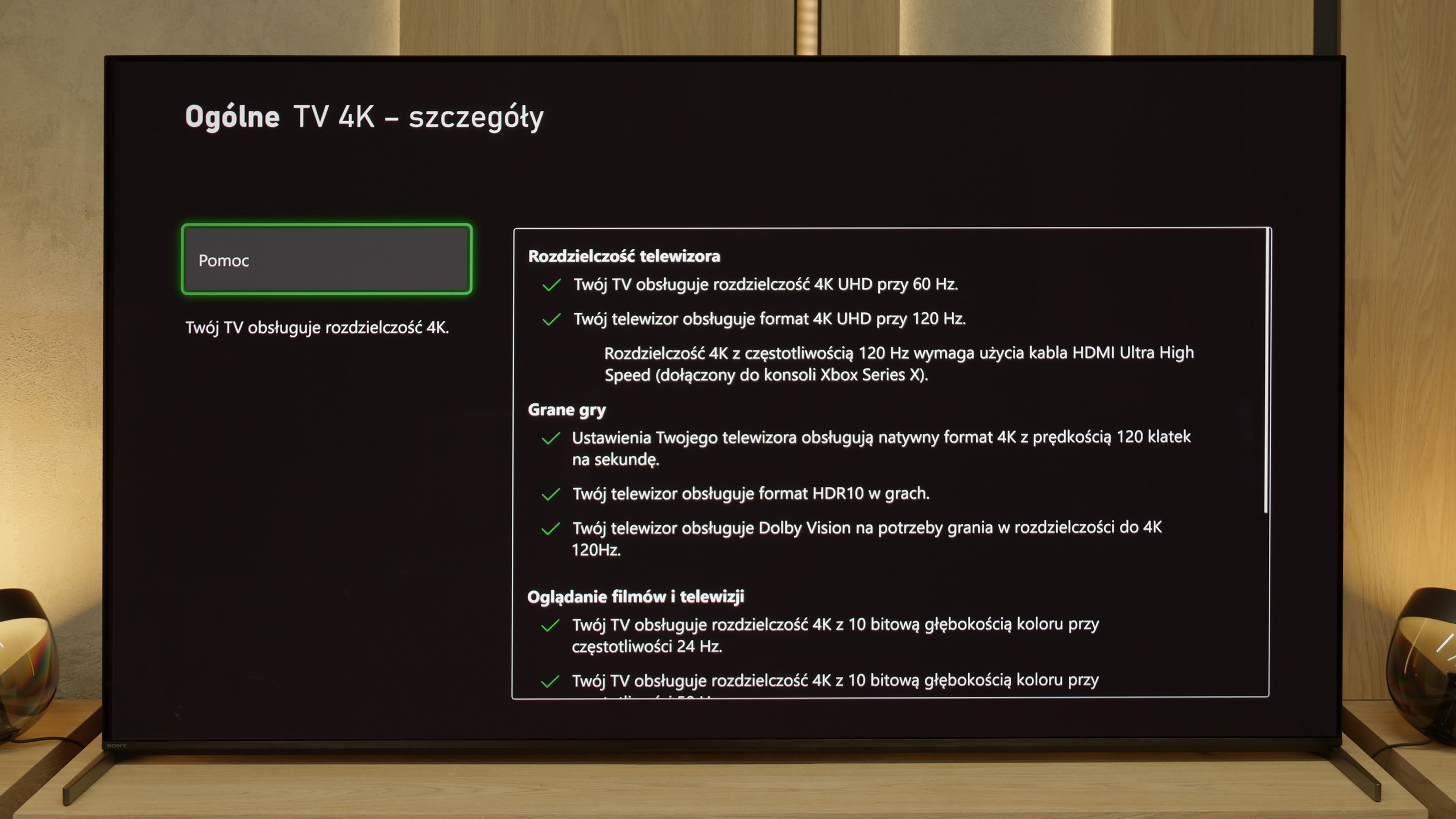

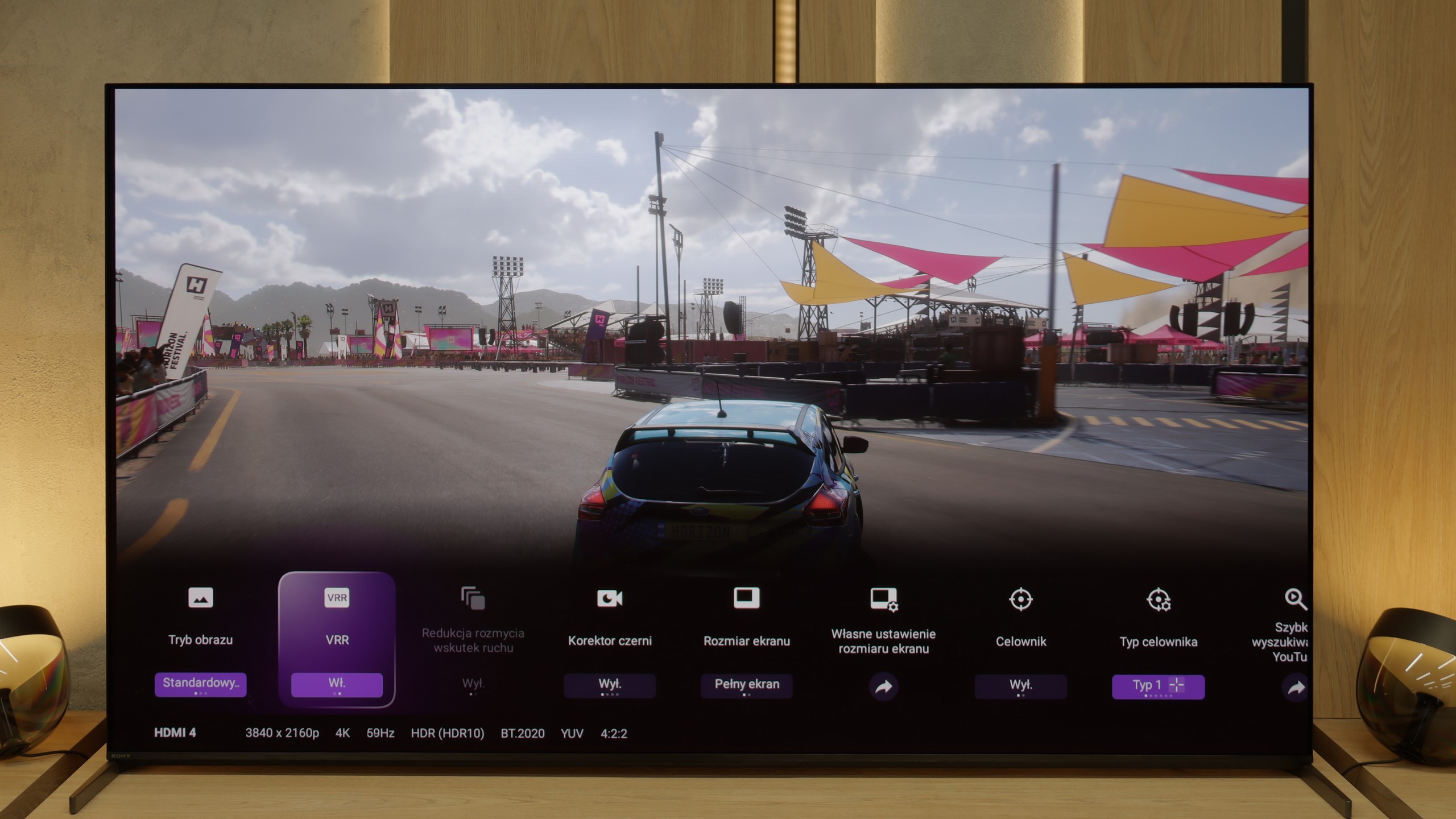

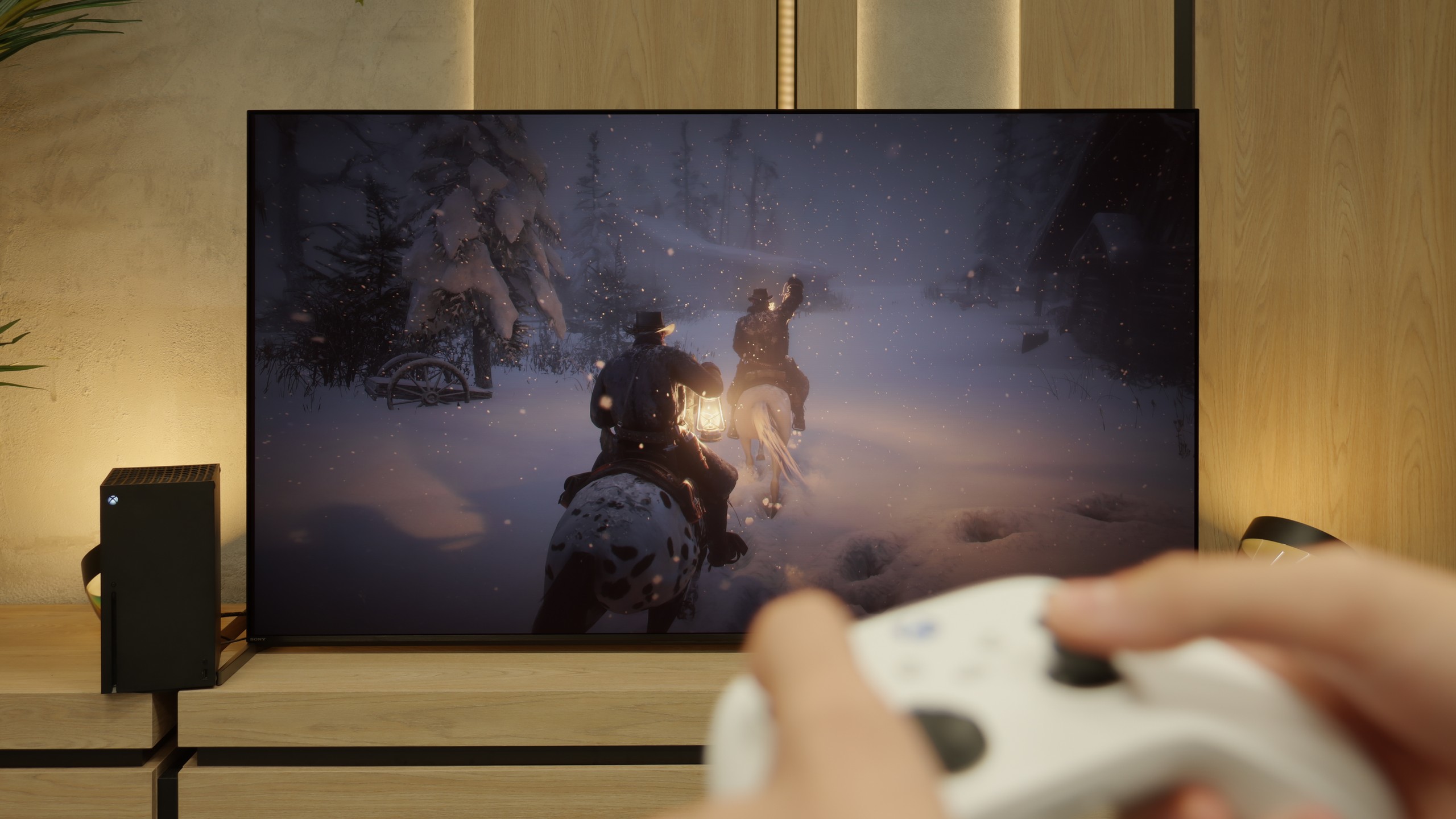
The Sony Bravia 9 television is equipped with four HDMI ports, but what is puzzling for a device of this class is that only two of them operate in the 2.1 standard. Despite this, it should not detract from the fact that nearly all features work excellently, providing a positive experience when using them. Games running in HDR10 or Dolby Vision benefit from low input lag, ensuring a comfortable gaming session. The solid implementation of the HGIG mode is a noteworthy feature, as, after proper calibration, it closely aligns with Dolby Vision.
Sony introduced the GameBar feature to its televisions last year, a standard for many manufacturers. This feature allows for quick adjustment of settings without exiting the game. Its implementation has been seamless, offering conveniences such as a crosshair grid, black level adjustment, and reducing the screen to gaming monitor proportions.
The Sony Bravia 9 will find its fans, particularly among PlayStation enthusiasts. It is a natural pairing since the console and the television share identical capabilities. However, more broadly speaking, despite the minor issues with Dolby Vision in games, the Bravia 9 remains a very good television for gaming overall.
Sony really learned its lesson from previous years and in the Bravia 8 II prepared a package of features for gamers that is difficult to describe as anything other than "almost perfect." We have everything expected in equipment of this class – VRR, ALLM, Dolby Vision Gaming mode, HGiG, and even a convenient Game Bar that allows you to quickly preview parameters and change settings without leaving the game. Additionally, it's worth noting how smoothly and flawlessly these features work – no delays, no strange stutters. You simply turn on the game and everything looks as it should. Unfortunately, there are a few "buts." The manufacturer still gives us only two full-bandwidth HDMI ports, so if someone has a console, a PC, and another device like a Soundbar connected via eARC, it starts a game of cable swapping. It's also surprising that there is no support for 1440p resolution at 120 Hz – particularly important for Xbox gamers. Overall, however – this is one of those TVs that can comfortably be placed in the center of a gaming lounge, allowing you to enjoy gameplay without significant compromises.
Input lag
9.7/10
9.8/10
SDR
HDR
Dolby Vision
The delay time on the Sony Bravia 9 remains impressively low in all scenarios. Even the most dedicated gamers will appreciate the exceptionally low input lag, particularly when playing demanding 4K 120 Hz games with HDR, which measures just 10 ms.
Input lag in the Bravia 8 II is a strong point that every gamer will appreciate. With 120 Hz content, the values hover around 10 ms, putting this TV at the top of its class – the response is almost instantaneous, and controls in dynamic games remain fully predictable. At 60 Hz, the lag time naturally doubles, but it still stays at a level that can be described as exemplary. Importantly, Sony has done a great job with the support of Dolby Vision in games – it works here exceptionally smoothly and quickly. This is a significant change compared to previous years when Dolby Vision Gaming in TVs from this brand could cause additional delays or minor issues with smoothness. It’s clear that the manufacturer has refined this element to perfection.
Compatibility with PC
7.6/10
7.6/10

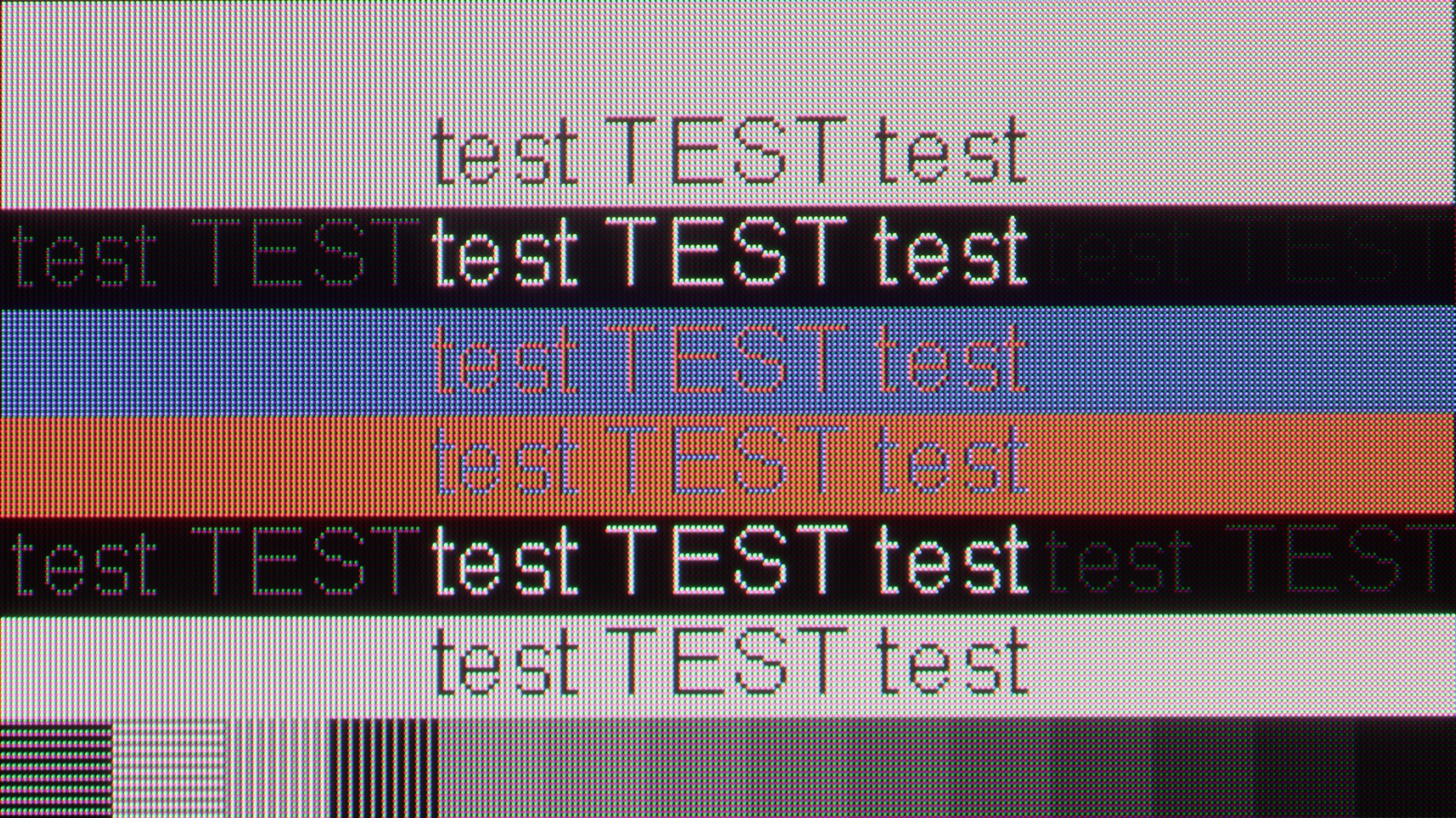
The Sony Bravia 9 delivers excellent performance when combined with a PC, thanks to its low latency of just 9 ms, ensuring an immediate response between the mouse, eye, and screen. This is particularly beneficial for tasks that require precise, real-time feedback. The text readability on the TV is also commendable, especially when switched to "Game" mode, which provides the clearest display. In other modes, text might appear less readable.
The subpixel layout on the Bravia 9 is BGR, which doesn't significantly impact its use as a monitor. While operating systems aren't designed for this layout, causing slight blurring on edges in some cases, the difference is so minimal that only a few users might notice it.
Compared to last year's A95L, Bravia 8 II has made a significant leap forward in terms of compatibility with PCs. The support for chroma 4:4:4 works flawlessly, so text—both regular and very small—remains sharp and clear. This means that working with documents, spreadsheets, or even editing photos does not strain the eyes and does not require gymnastics with the settings.
However, there is a sense of incompleteness. One could expect an additional gaming mode with a refresh rate above 120 Hz in a TV of this class. After all, in the price segment this model is in (and even in lower ones), 165 Hz and even 240 Hz are becoming more common. Here such an option is lacking, which may be a slight disappointment for some PC enthusiasts. Fortunately, thanks to the low input lag and G-Sync support, Bravia 8 II still manages to immerse in PC gaming without feelings of delay or screen tearing. It's equipment that performs well not only in the living room but also on a gamer's desk.
Viewing angles
7.4/10
9.8/10
The Sony Bravia 9 performs well in terms of viewing angles, thanks to the application of an angle coating. This reduces the typical colour degradation and contrast drop often seen in TVs with VA panels. While a significant deviation from the central axis does lead to some image instability, the overall viewing experience remains positive, offering better off-axis performance than many other VA panel-equipped televisions.
In this regard, the Bravia 8 II is at the absolute forefront of the market. Thanks to the use of a QD-OLED panel, the television maintains full color depth and high contrast even when viewed from a steep angle. This is a clear advantage over constructions based on WOLED panels, which can slightly lose saturation and detail at more extreme viewer positions. Like its competitor, the Samsung S95F, the Bravia 8 II model performs almost flawlessly in this category – regardless of whether we are watching a movie from the sofa, an adjacent chair, or standing in the corner of the room, the picture remains true to the original.
TV efficiency during daytime
9.5/10
5.6/10

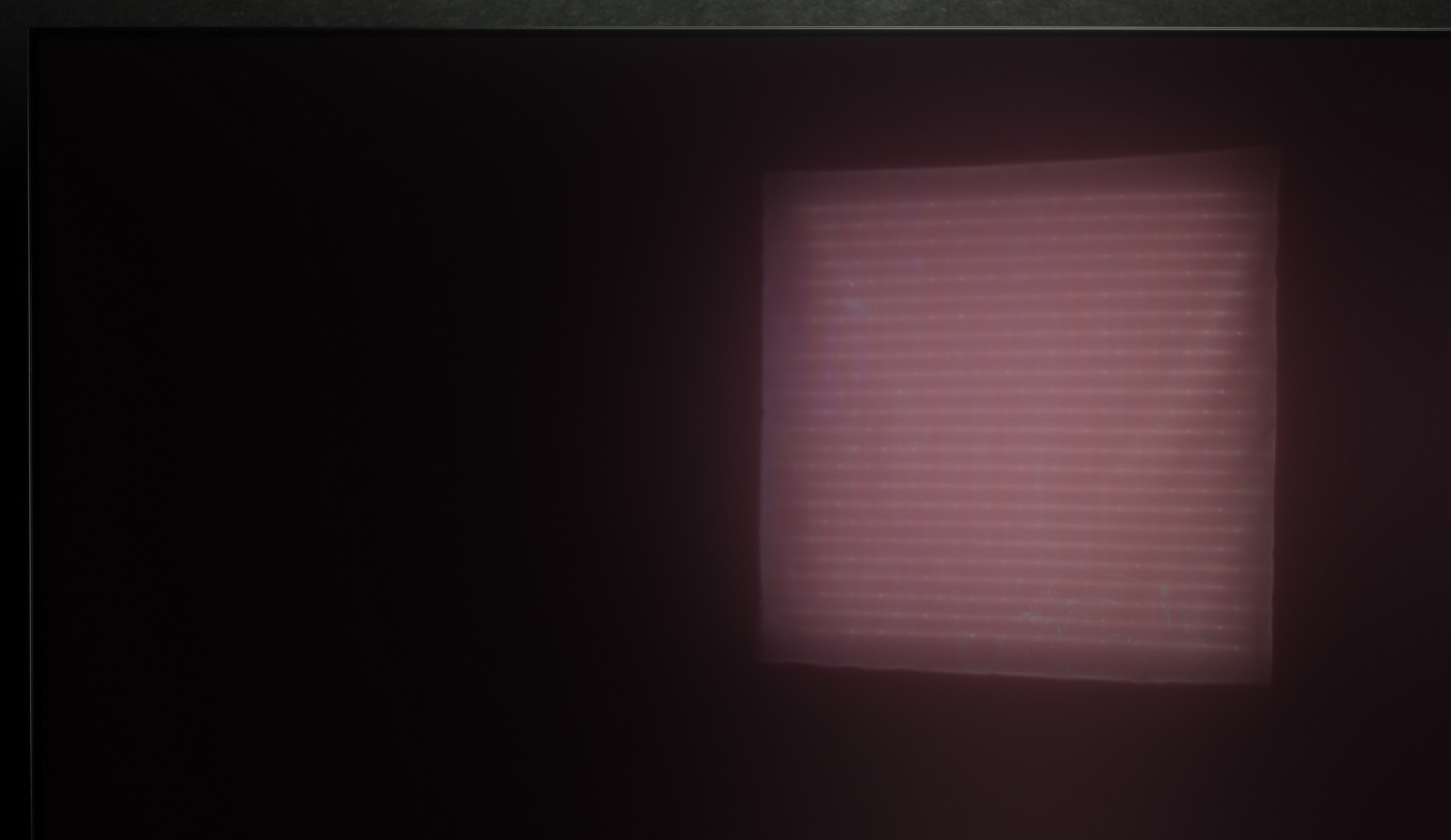

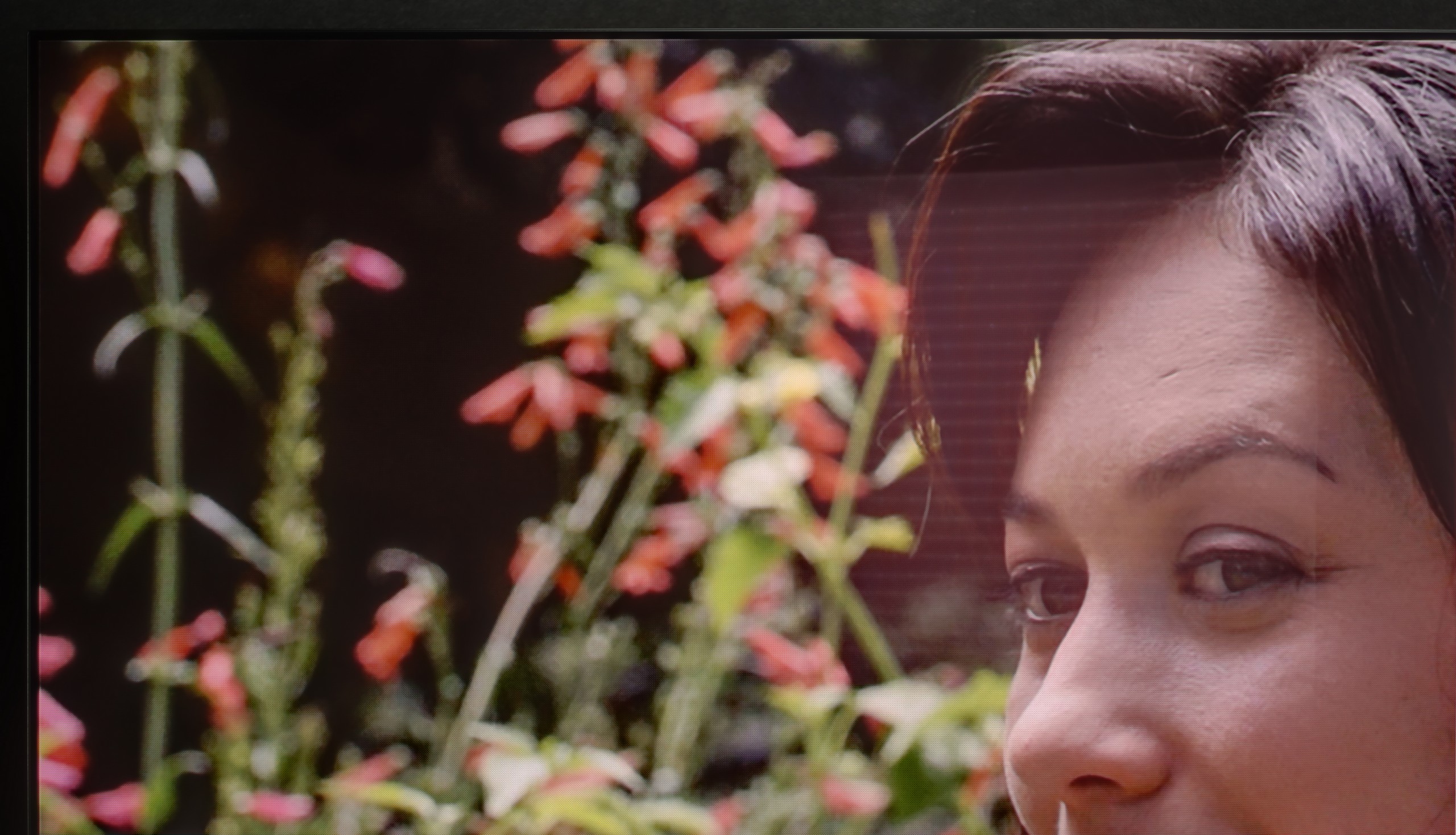
Matrix brightness
Average luminance SDR
Sony Bravia 8 MK2: 419 cd/m2
Sony Bravia 9 (XR90): 1609 cd/m2
The Sony Bravia 9 excels in bright environments, with a peak brightness of 1600 nits. This allows for a comfortable viewing experience even when the TV is exposed to harsh angled light. Reflections are minimal and do not significantly affect the viewing quality, making it highly suitable for watching during the day. As a result, the Bravia 9 earns an almost perfect score for its performance in well-lit conditions.
For a television of this class, we expected better performance. An average SDR brightness of around 400 nits is definitely too low to speak of great visibility in a sunlit living room. In very demanding lighting conditions, we will be forced to reach for curtains or… move the television to another location. As with every QD-OLED panel, the black level during the day is not perfectly black—it takes on a slightly cherry hue. Fortunately, this technology also has its advantages over WOLED panels – it significantly better suppresses reflections, making direct light reflections less bothersome. Despite this advantage, in the overall assessment, the performance of the Bravia 8 II in a bright room should be rated as average, especially considering the high-class equipment to which this model belongs.
Details about the matrix
Subpixel Structure:

Panel uniformity and thermal imaging:

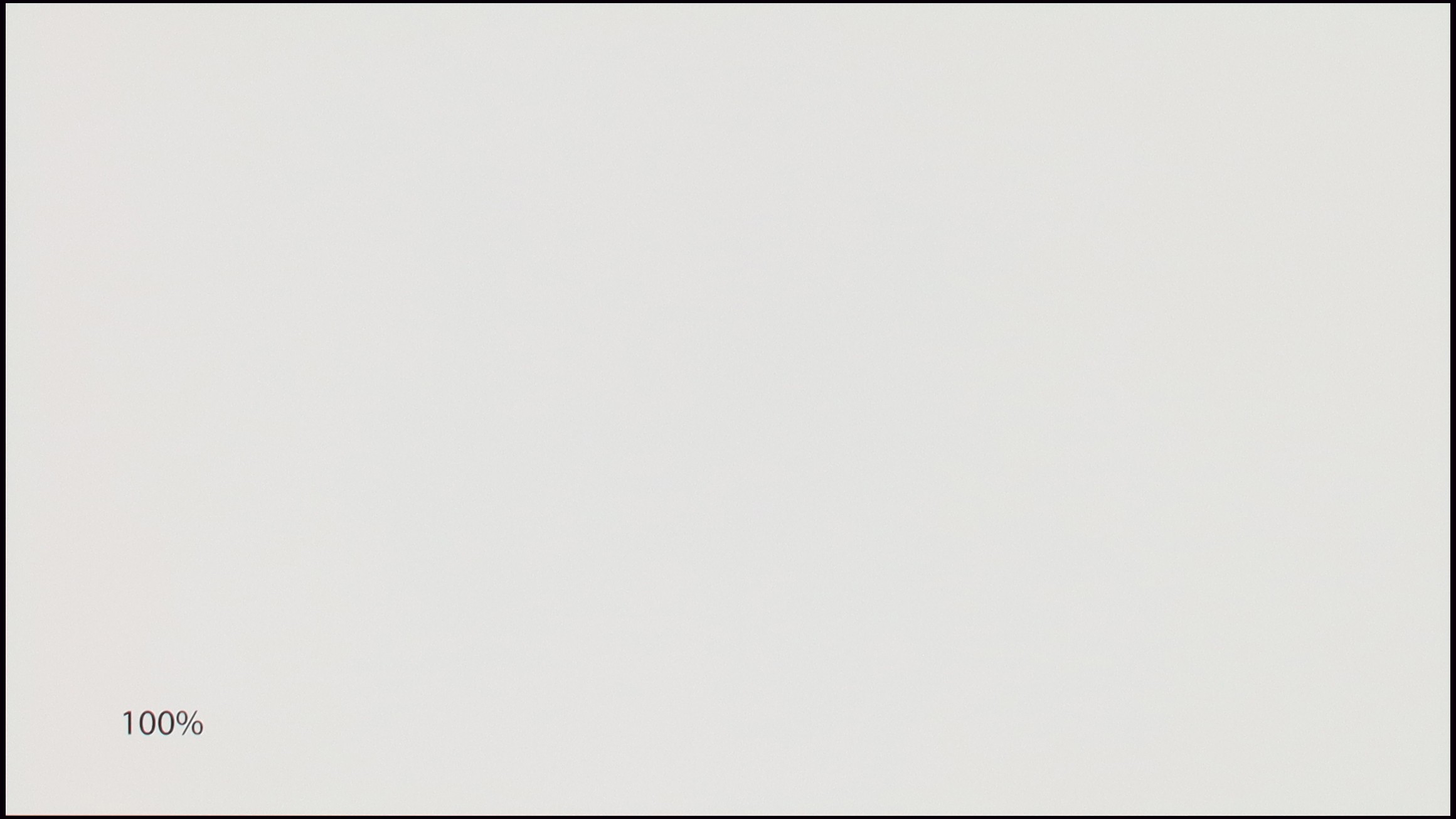
Sony Bravia 9 (XR90)
Sony Bravia 8 MK2
TV features
8.8/10
8.9/10
- HDMI inputs2 x HDMI 2.0, 2 x HDMI 2.1 48Gbps2 x HDMI 2.0, 2 x HDMI 2.1 48Gbps
- OutputsToslink (Optical audio), eARC (HDMI), ARC (HDMI)Toslink (Optical audio), eARC (HDMI), ARC (HDMI)
- Network InterfacesWi-Fi 2.4GHz, Wi-Fi 5GHz, Ethernet (LAN) 100MbpsWi-Fi 2.4GHz, Wi-Fi 5GHz, Ethernet (LAN) 100Mbps
- TV receptionDVB-T, DVB-T2, DVB-S, DVB-S2, DVB-CDVB-T, DVB-T2, DVB-S, DVB-S2, DVB-C
Classic features:
- Recording to USB (terrestrial TV)
- Recording programming
- Picture in Picture (PiP)
- RF remote control (no need to aim at the screen)
- Backlit remote control
- Teletext
- Audio only mode
- Bluetooth headphones support
- Simultaneous Bluetooth headphones & TV audio
Smart features:
- AirPlay
- Screen mirroring (Windows Miracast)
- Voice search
- Voice search in native language
- Ability to connect a keyboard and mouse


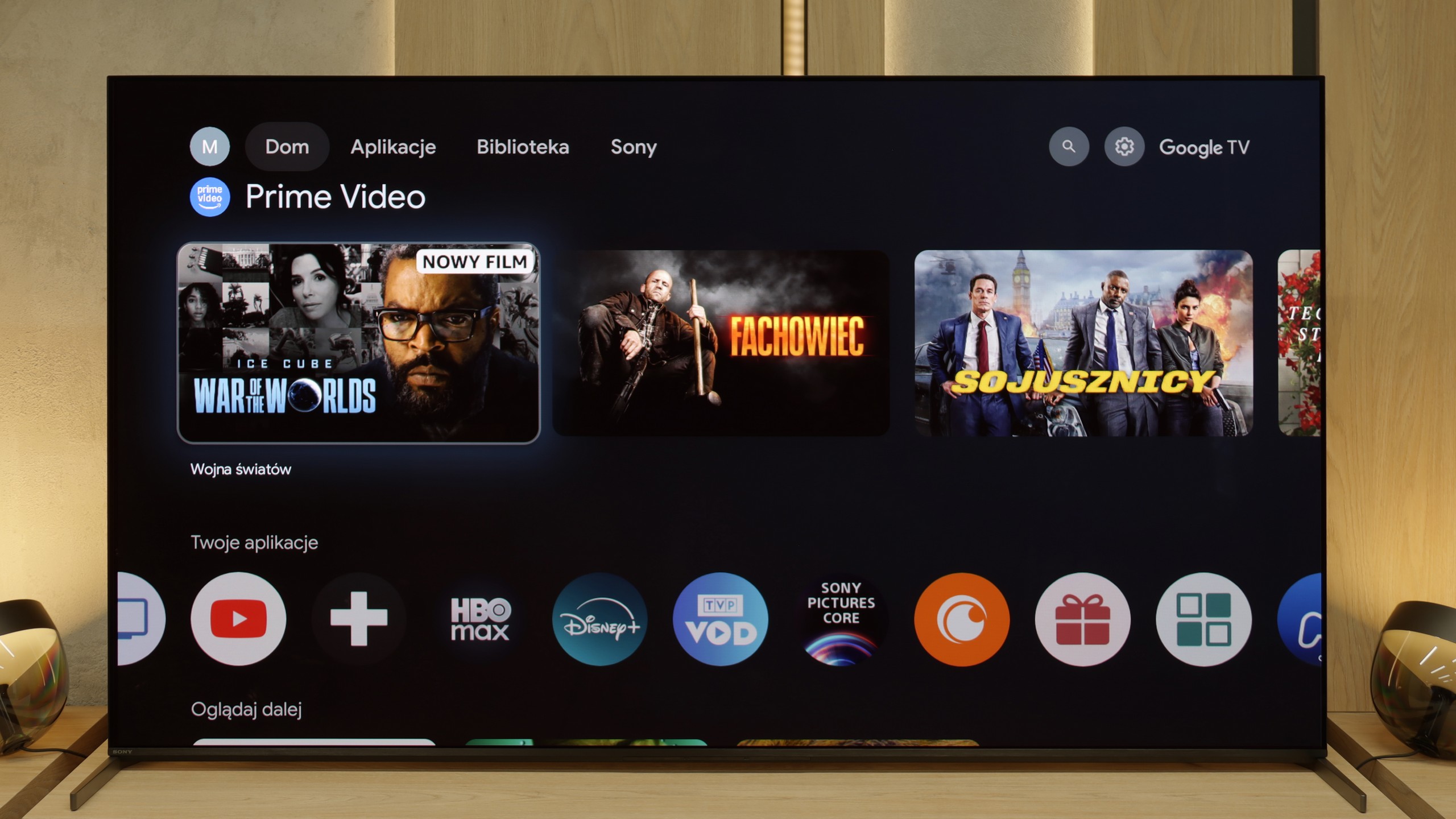
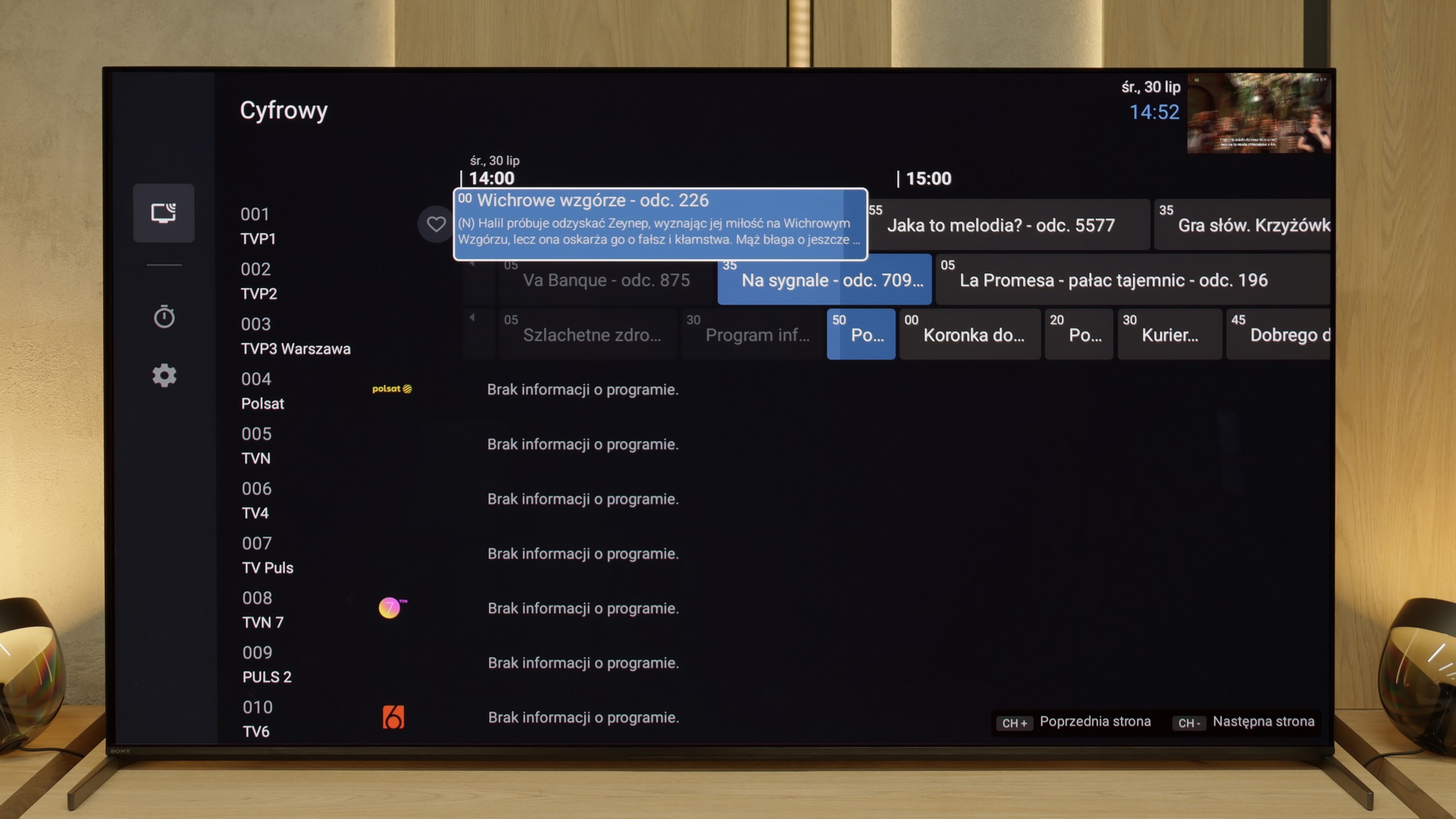
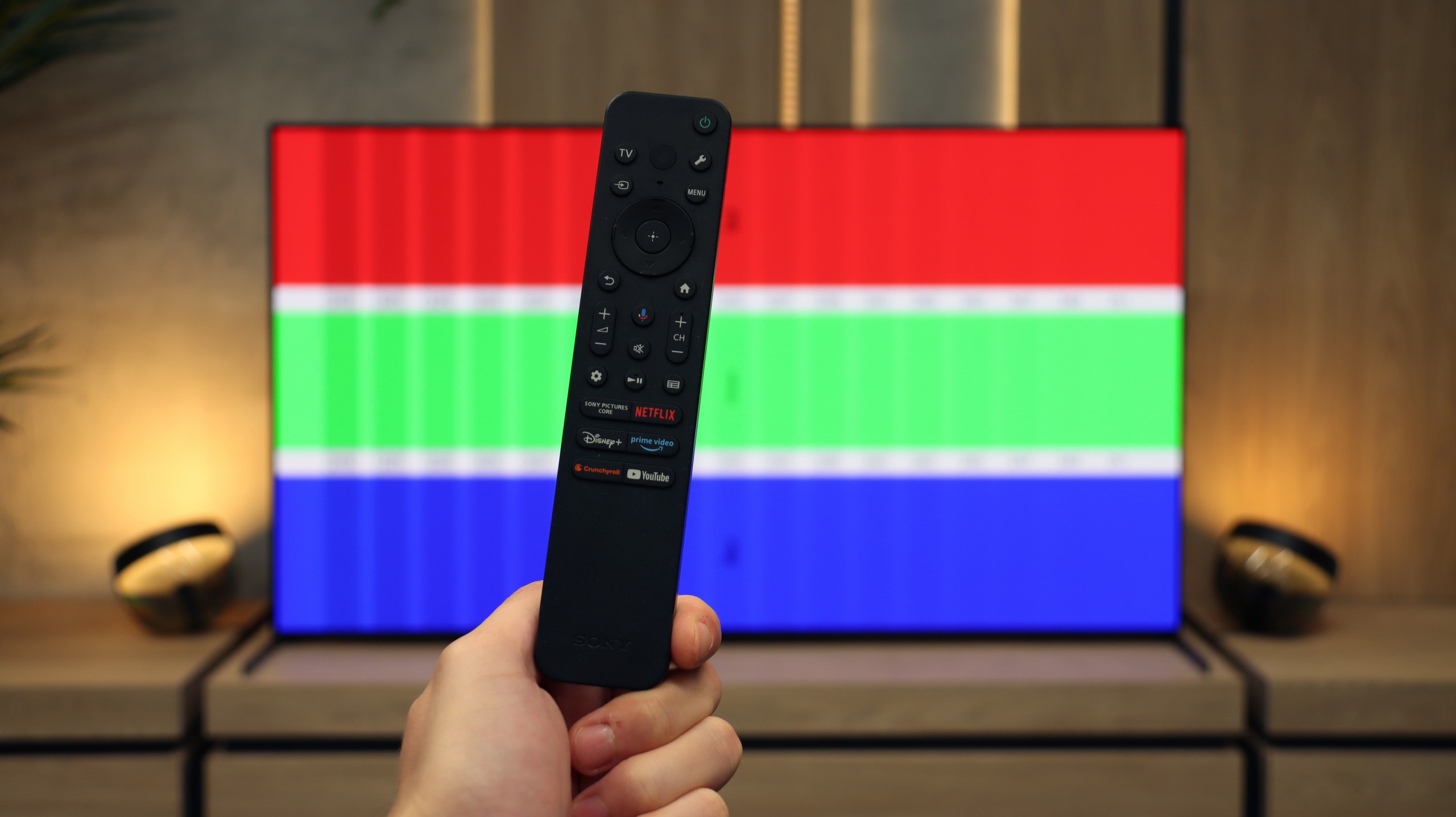
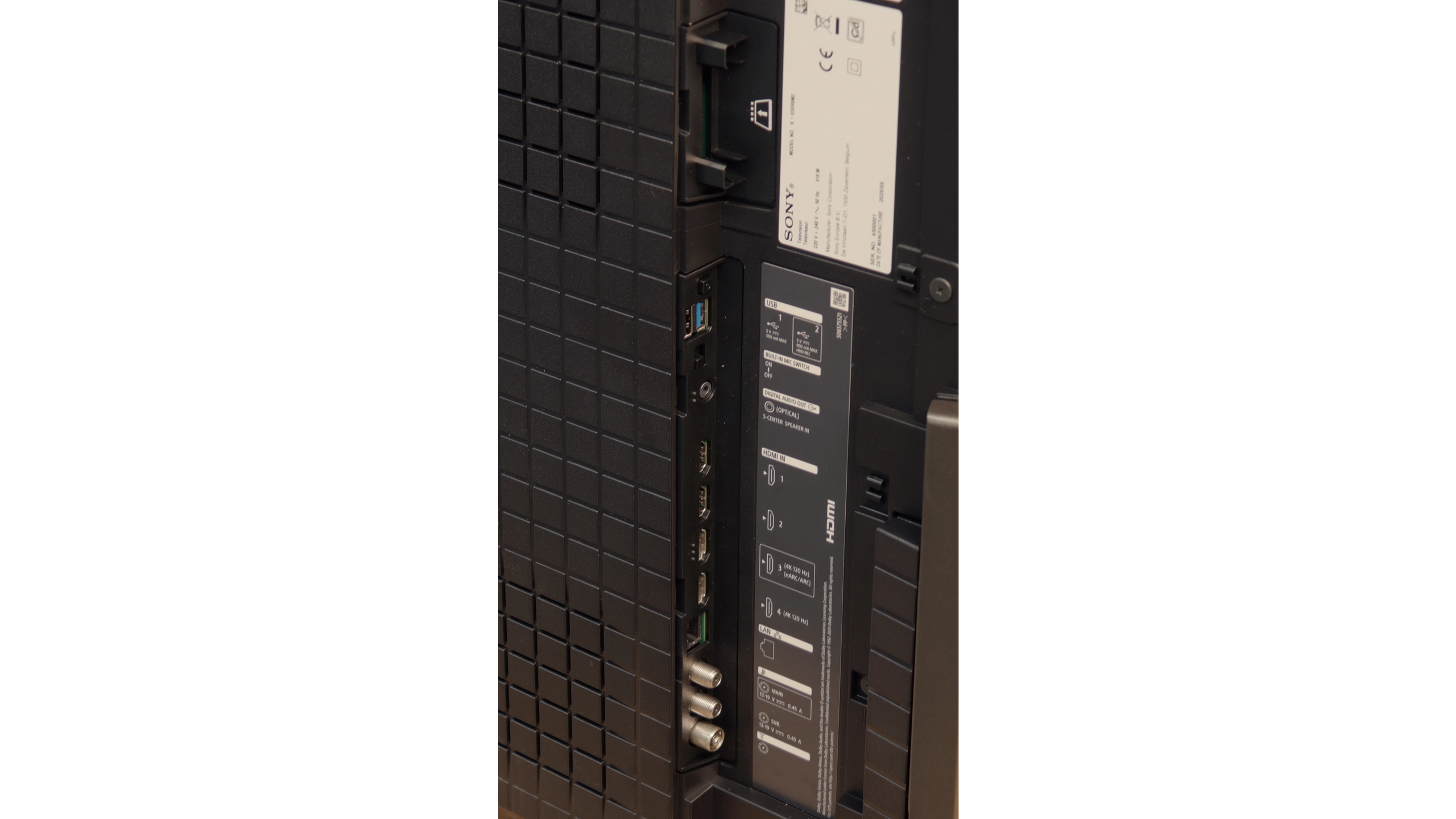
The Sony Bravia 9 benefits from the Google TV system, which stands out compared to TVs with proprietary operating systems. Google TV allows for the easy installation of applications from the official store and external sources via APK files. This flexibility makes it a more accessible option for users who want to expand their TV's functionality.
Additionally, Google TV offers various user-friendly features, such as connecting a keyboard with a touchpad, which makes typing queries more convenient. Voice control via the remote also works effectively, though there are occasional minor issues with translation. Google TV is regularly updated, enhancing functionality and adding new features, although some users have reported occasional performance hiccups.
Overall, Google TV is one of the most popular and efficient systems, offering a smooth experience with minimal lag or freezing. For those seeking an open, feature-rich system that maximizes the potential of their TV, Google TV is the best option.
SONY Bravia 8 II – Television Features
Bravia 8 II really has a lot to offer to those who use a television in a traditional way. The set includes two remotes – one modern, minimalist "smart" remote and the other, a traditional numeric remote, designed for those who simply view the television as… just a television 😉. Sony also allows programming and recording TV shows to external storage, such as a USB drive. Elements like EPG or teletext are hardly worth mentioning – they are obvious.
SONY Bravia 8 II – GoogleTV
When it comes to smart features, the biggest advantage is the Google TV system, which we believe Sony has refined the best on the market among all manufacturers. Although the system can be demanding in terms of hardware, it runs very smoothly on the Bravia 8 II. Google TV also offers a vast selection of applications, which is another strong point. There are also exclusive features that are hard to find in the competition – including the ability to play remotely on your own PlayStation console or access to the private movie library Bravia Core, available exclusively on Sony televisions. In short – a full package of possibilities.
Playing files from USB
8.7/10
8.9/10
Supported photo formats:
Maximum photo resolution:

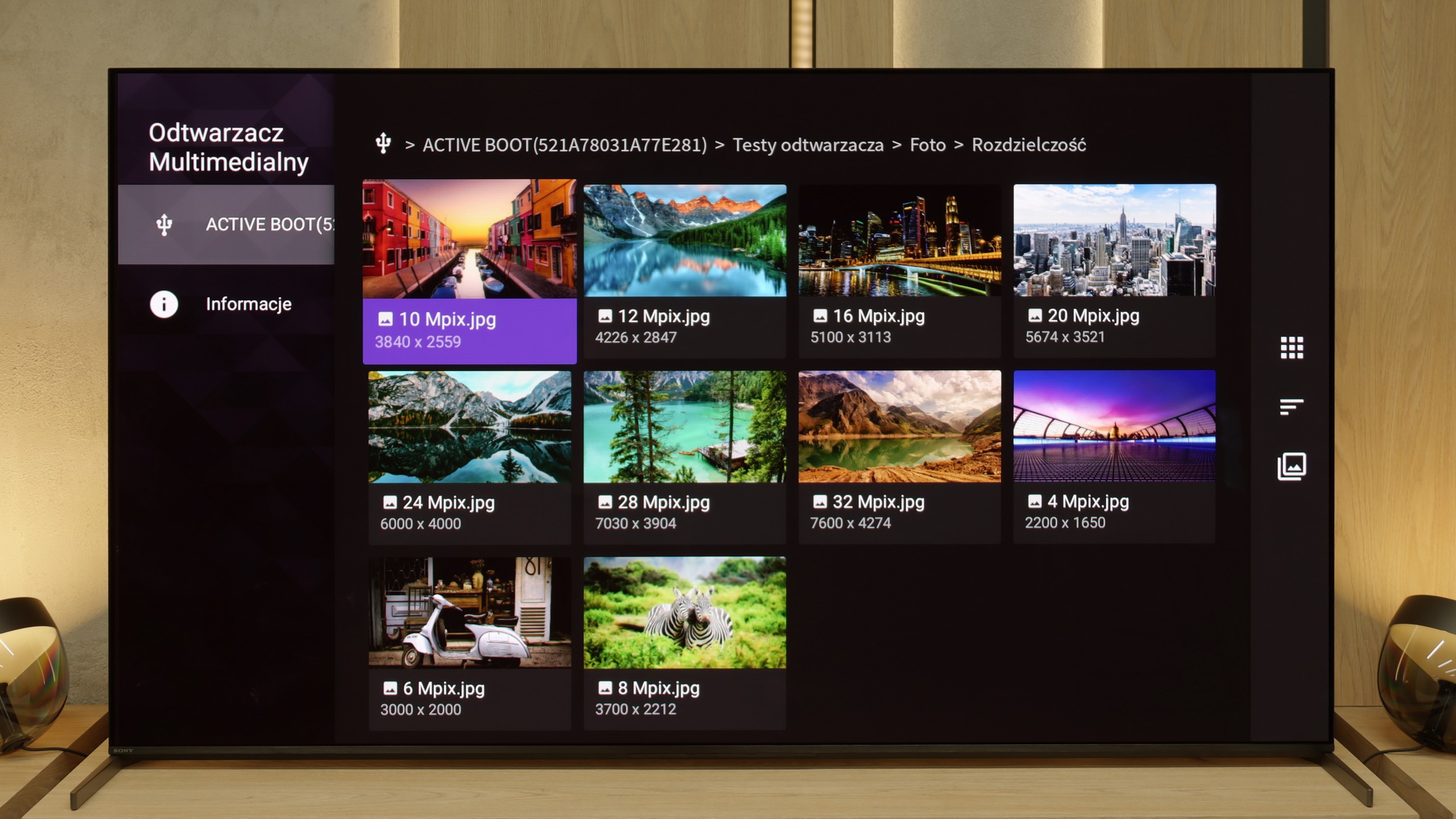
The built-in player in the Sony Bravia 9 performs well, handling a wide range of media files with ease. However, it does have a few limitations. Notably, it does not support certain subtitle formats like .sub or .txt, and its image format support is limited to JPEG and HEIC, which may be a drawback for users with diverse media collections. That said, these shortcomings are not major issues, as the ability to install third-party applications like VLC or KODI provides an easy workaround for those seeking broader compatibility. Overall, the built-in player offers solid performance, and with the flexibility of additional apps, users can enjoy almost any media format without trouble.
Bravia 8 II handles multimedia playback very well – the built-in player opens practically everything you can expect. Yes, there are a few formats that it cannot handle, but this is not a serious issue. The biggest advantage is the fact that thanks to the Google TV system, we are not limited solely to the default player. At any time, we can install an alternative application that can manage files that the built-in Sony software struggles with. This makes the television a universal multimedia center, capable of handling almost any format.
Apps
9.6/10
9.6/10














































Sound
9.4/10
8.5/10
- Maximum volume-86dB
- Dolby Digital Plus 7.1
- Dolby True HD 7.1
- Dolby Atmos in Dolby Digital Plus (JOC)
- Dolby Atmos in Dolby True HD
- DTS:X in DTS-HD MA
- DTS-HD Master Audio
We must admit that the sound from the Sony Bravia 9 impressed us. While we anticipated high-quality audio from such a top-tier product, the sound quality exceeded expectations. Every instrument is distinguishable, and the bass adds a solid depth to the overall experience. Without a doubt, this is the best-sounding television we've had the opportunity to test. Of course, we understand that many buyers of this kind of premium TV will already own a home theatre system. Thankfully, the Bravia 9 supports DTS-HD Master Audio and Dolby Atmos, meaning there are no significant obstacles when connecting it to more advanced audio setups. This ensures a seamless integration for those looking to enhance their audio experience even further.
In terms of sound, the Bravia 8 II is absolute top-tier in the world of televisions. Sony once again proves that their Acoustic Surface technology is not just a marketing gimmick, but a real advantage – the speakers hidden behind the screen make the entire panel act as a diaphragm. The soundstage is wide, dialogues sound exceptionally clear, and the sound follows the action on the screen precisely. It’s one of the few televisions for which you can really skip getting an additional soundbar. (Of course, the basic one). Additionally, Sony hasn’t forgotten about formats that competitors are slowly disregarding – full DTS support is a nod to movie lovers who want to extract the maximum experience from films and series recorded on physical media.
Sound Quality Test
No sound test video
Acoustic Measurements
No acoustic data
86dBC (Max)
75dBC
